An Online Exhibit
PRIDE! OUR STORY
curated & designed by
John N. Daniello

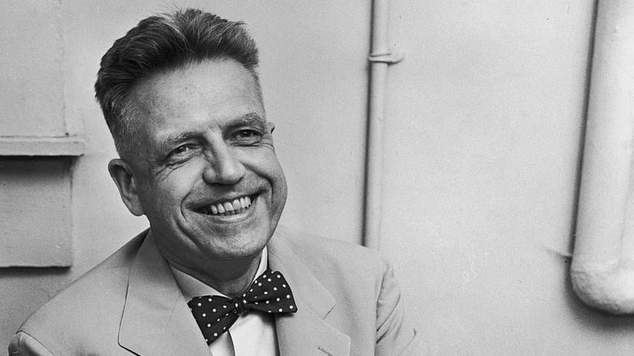

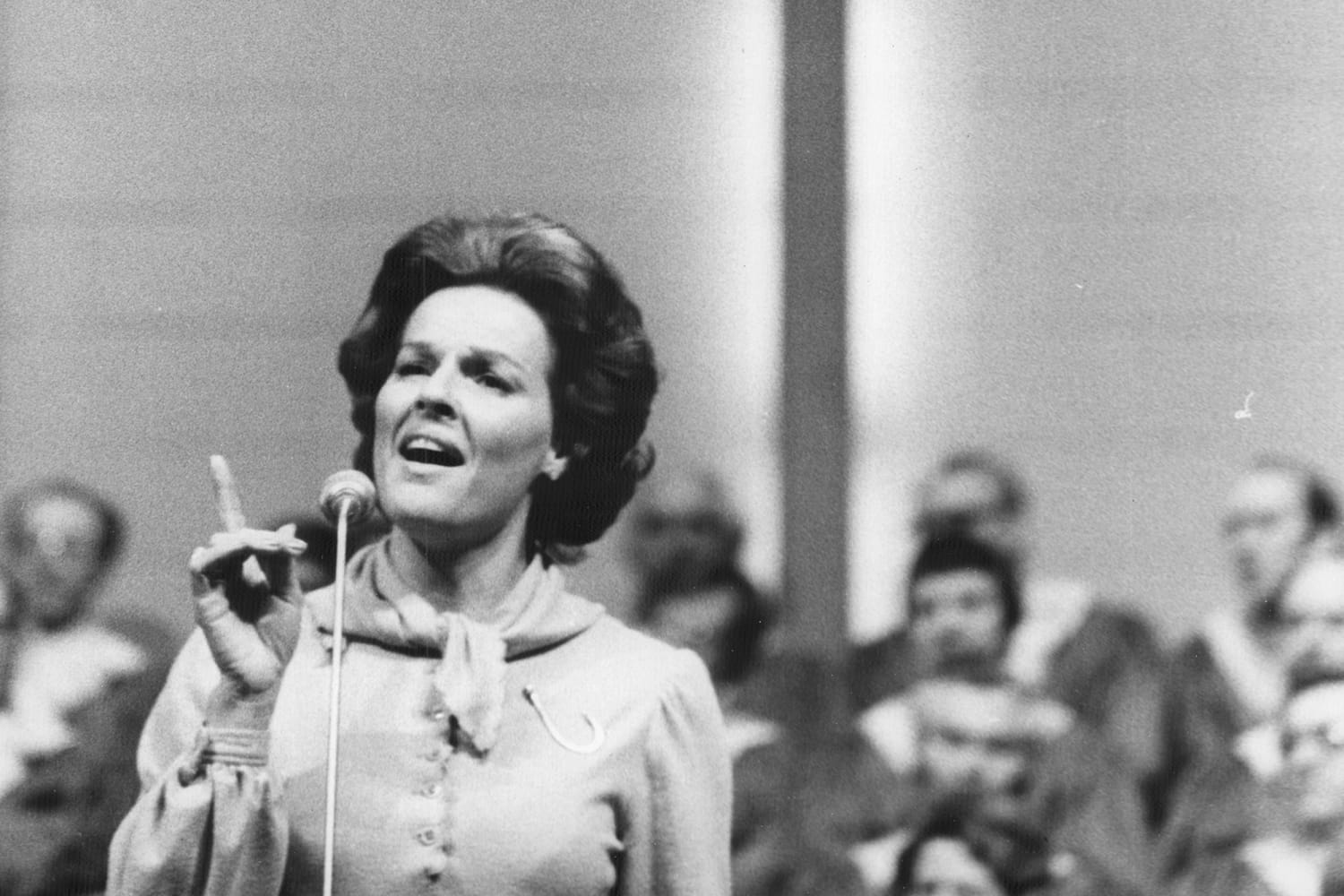
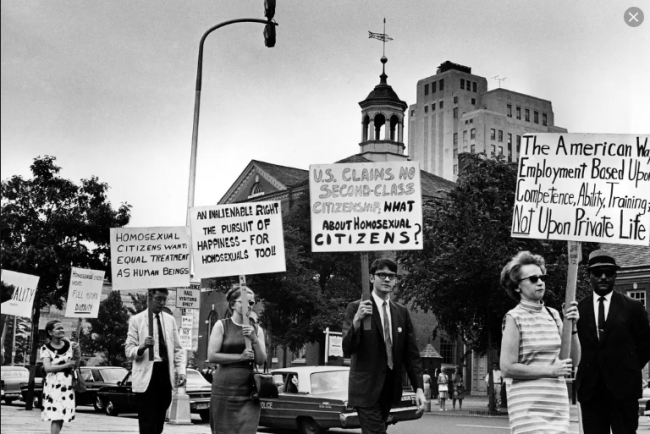
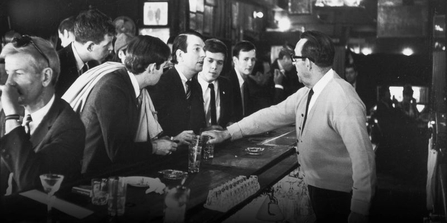

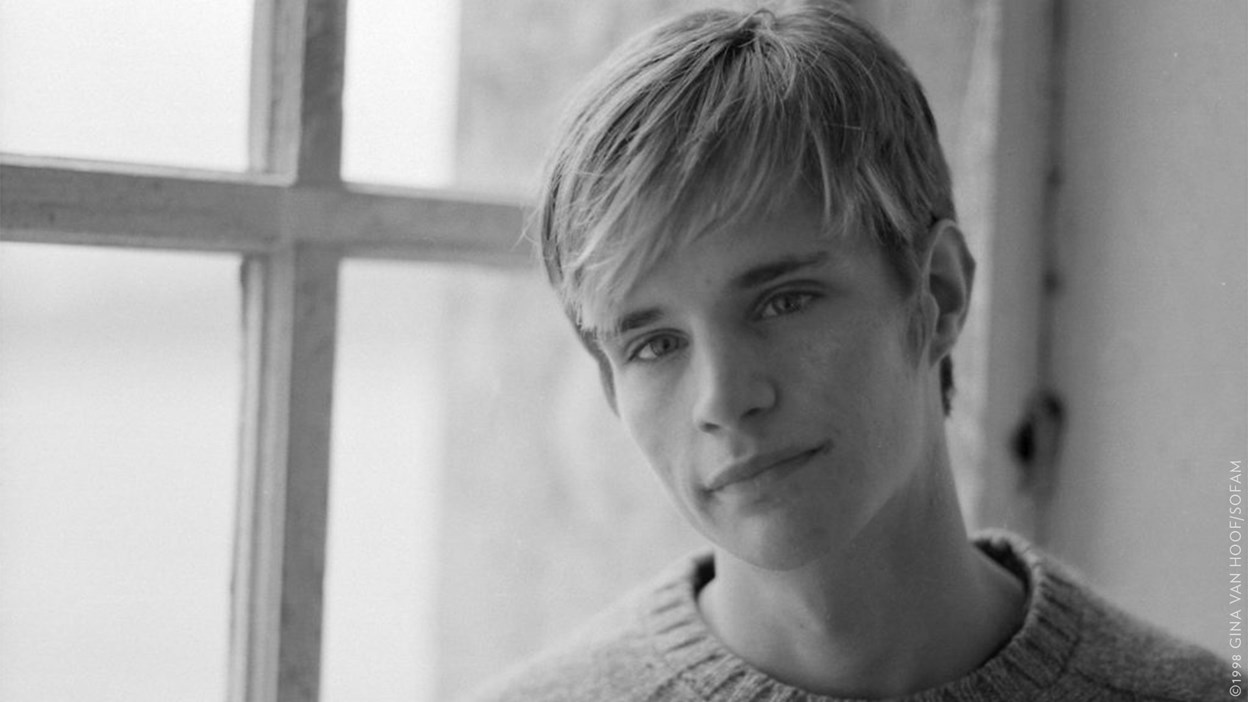

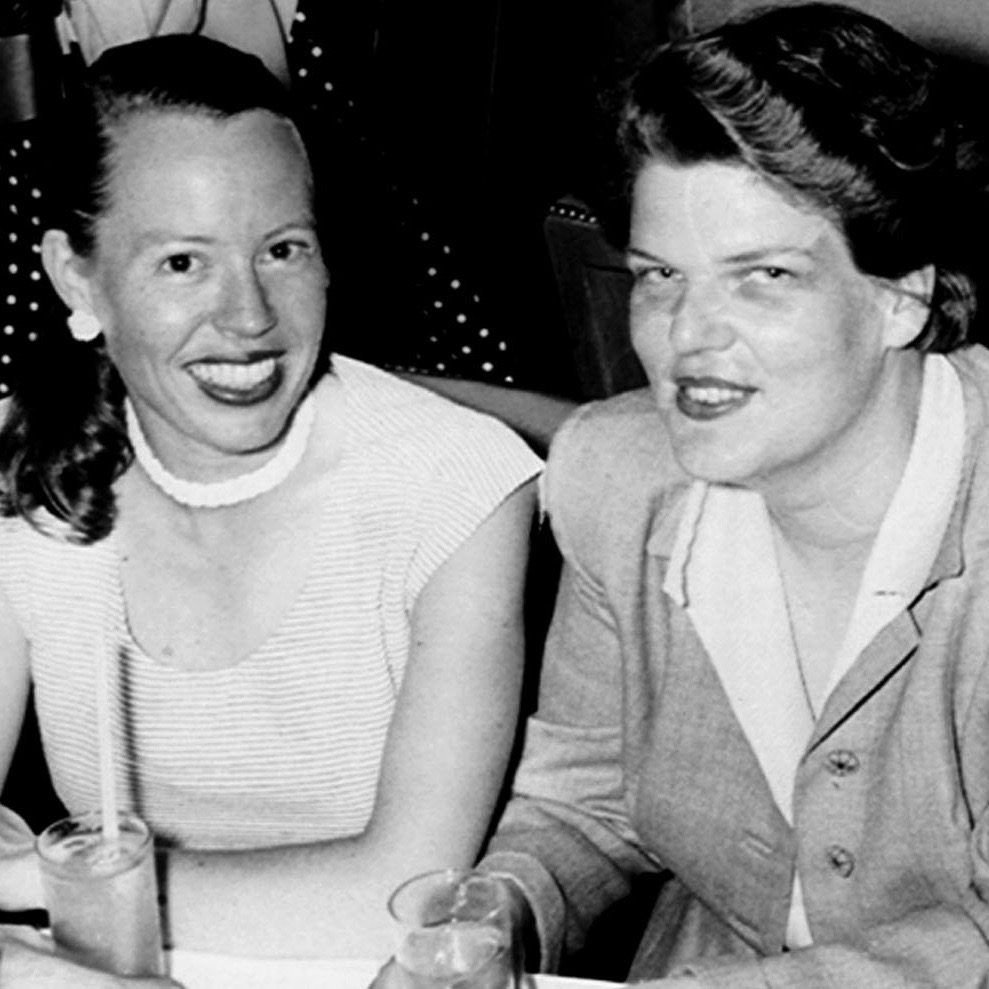

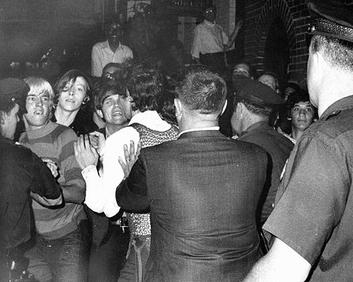
PRIDE! Our Story
The LGBTQ+ movement in the United States has made significant progress over the last century, with the most notable advancements occurring in the past two decades. Reaching this point has been an arduous journey, and the progress that has been made is thanks to the groundbreaking work of those who were unafraid to challenge the norms.
Within this online exhibit, you will discover the story behind those remarkable individuals who not only pioneered change but also fiercely championed the rights of future generations, even when the odds were stacked against them.
Pride Month?
Pride Month is celebrated in the month of June in the United States and numerous countries across the globe, but have you ever wondered why?
In November 1969, a march in response to Stonewall was proposed at the Eastern Regional Conference of Homophile Organizations in Philadelphia.
The proposed slogan for the march was “gay power”, but it was ultimately decided that the march’s theme would be “gay pride”.
On June 28, 1970, the Christopher Street Liberation Day march took place, coinciding with the first anniversary of the Stonewall riots. The march was named after the Street which served as the epicenter of New York City’s Gay Community.
Thereafter, Gay Pride came to be celebrated in the United States on the last Sunday in June.
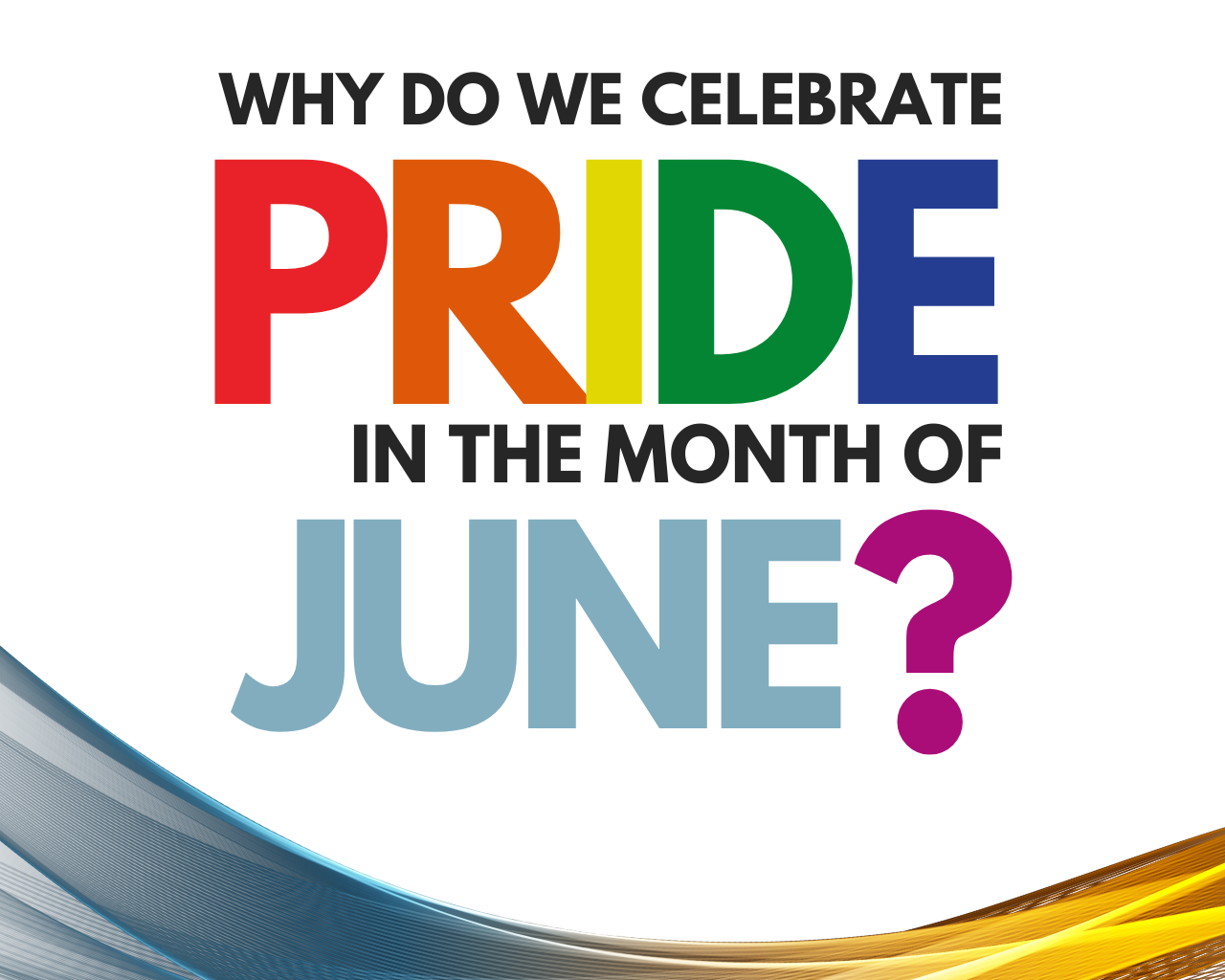
Pride Flags
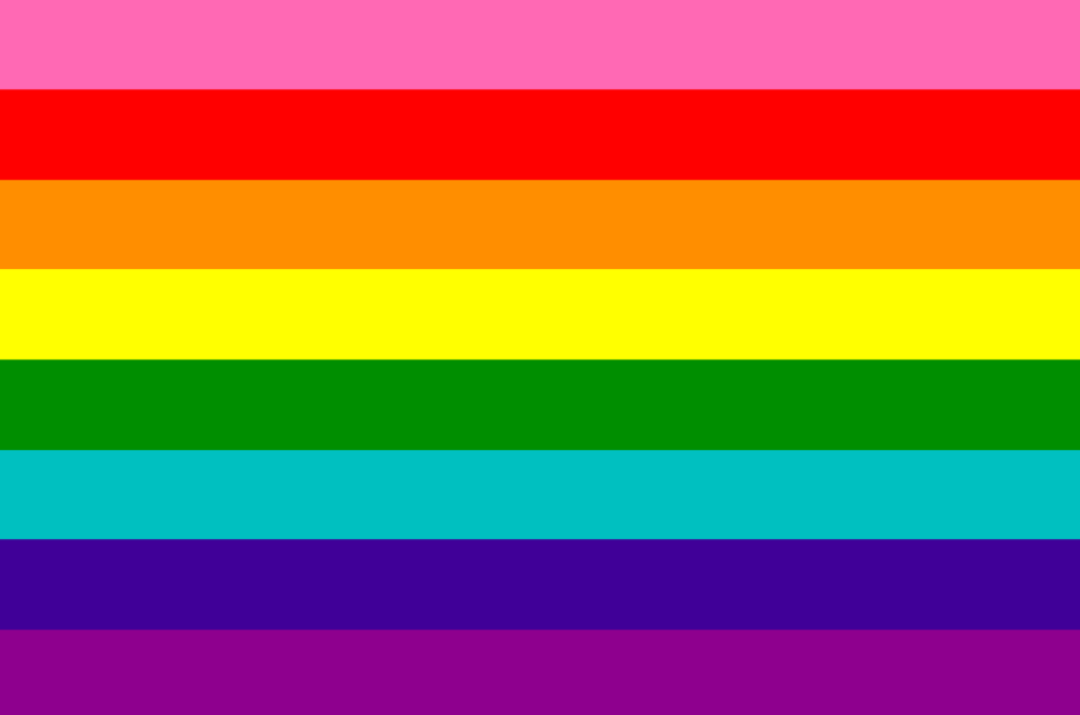
Rainbow Flag
The original Rainbow Flag was created by Gilbert Baker in 1978 to celebrate members of the gay and lesbian political movement. It comprised eight colored stripes stacked on top of each other to evoke a rainbow, a symbol of hope.
Baker assigned a specific meaning to each color: Pink (sex), Red (life), Orange (healing), Yellow (sun), Green (nature), Turquoise (magic), Indigo (serenity), Violet (spirit).
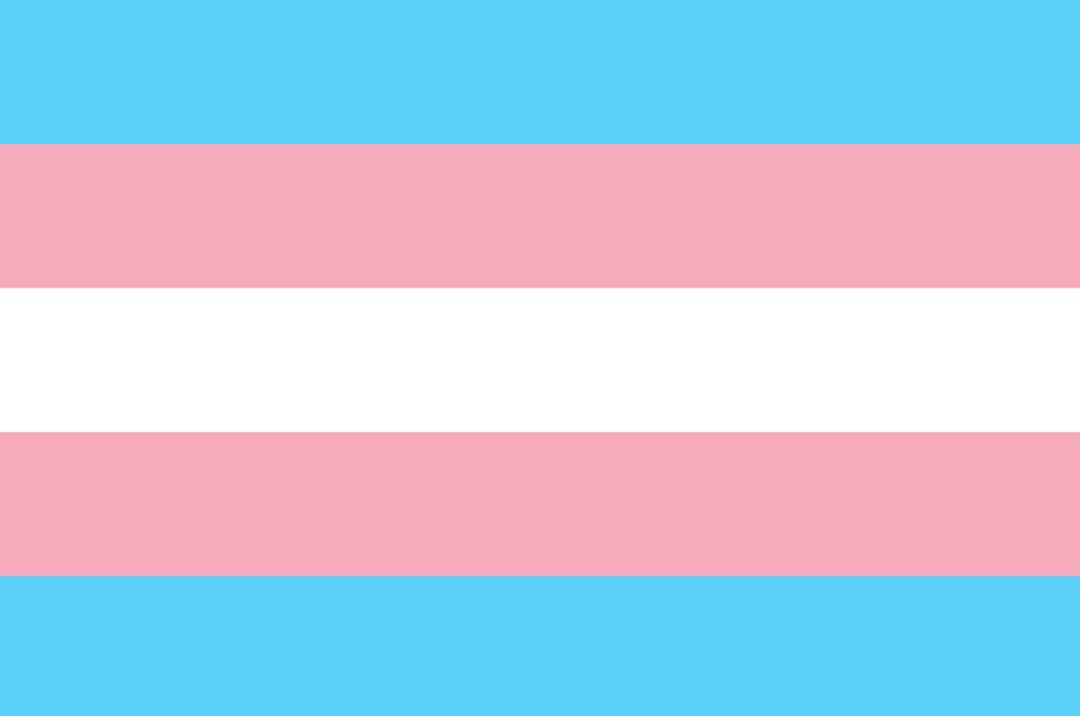
Trans Flag
The Transgender Pride Flag is most commonly used throughout the world to represent the transgender community. The best-known Transgender Flag, was created in 1999, by American trans woman Monica Helms.
Helms designed the flag so the pattern is always correct; Light Blue (for boys), Pink (girls), White (neutral/undefined/transitioning).
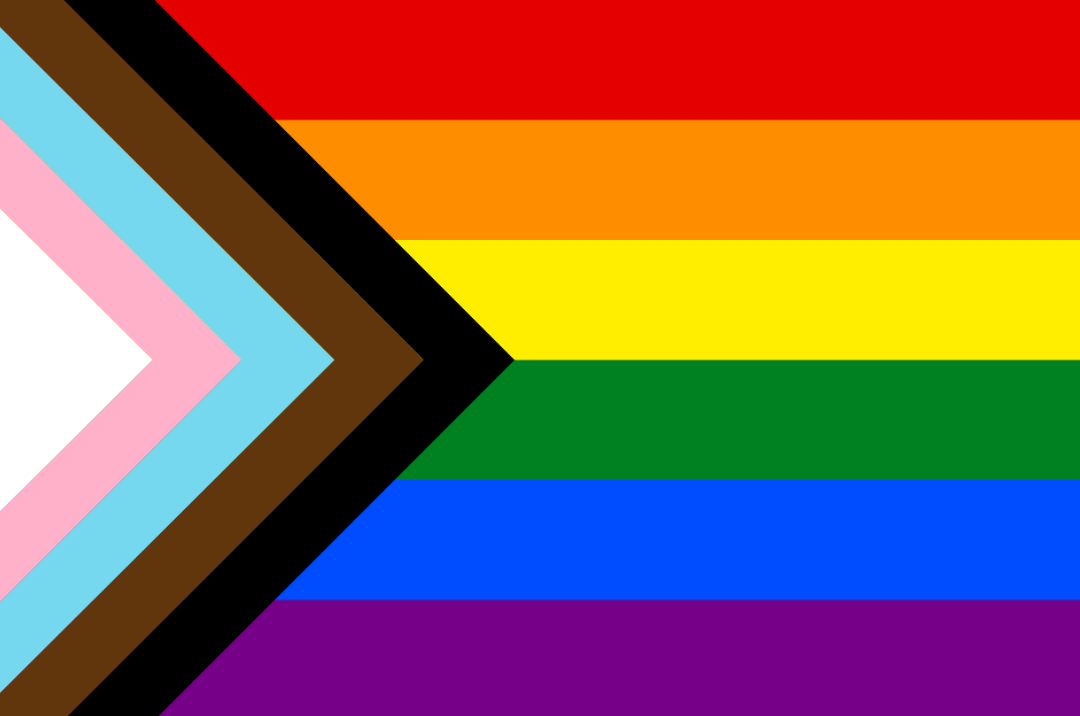
Progress Flag
In 2018, Daniel Quasar released a redesign using the Rainbow Flag, and adding a chevron with Black, Brown, Light Blue, Pink, and White stripes (for people of color, trans people, those living with/lost to HIV/AIDS).
The arrow points to the right to show forward movement.

Rainbow Flag
The original Rainbow Flag was created by Gilbert Baker in 1978 to celebrate members of the gay and lesbian political movement. It comprised eight colored stripes stacked on top of each other to evoke a rainbow, a symbol of hope.
Baker assigned a specific meaning to each color: Pink (sex), Red (life), Orange (healing), Yellow (sun), Green (nature), Turquoise (magic), Indigo (serenity), Violet (spirit).

Trans Flag
The Transgender Pride Flag is most commonly used throughout the world to represent the transgender community. The best-known Transgender Flag, was created in 1999, by American trans woman Monica Helms.
Helms designed the flag so the pattern is always correct; Light Blue (for boys), Pink (girls), White (neutral/undefined/transitioning).

Progress Flag
LGBTQ+ History

1924
The Society For Human Rights
Founded by the Bavarian-born Henry Gerber (1892-1972) in Chicago. The society is the first gay rights organization as well as the oldest documented in America. After receiving a charter from the state of Illinois, the society publishes the first American publication for homosexuals, Friendship and Freedom.
Within a year of its creation, the Society for Human Rights disbanded due to Gerber’s arrest after publication of the Society’s second newsletter.

1947
The Lavender Scare
In 1947, at the beginning of the Cold War, the State Department began campaigns to rid the department of communists and homosexuals, by establishing a set of "security principles" that went on to inspire the creation of a dual loyalty-security test which became the model for other government agencies, as well as the basis for a government-wide security program under the Eisenhower administration.
More than 4,380 gay men and women had been discharged from the military and around 500 fired from their jobs with the government.

1948
Sexual Behavior In The Human Male
Published by biologist and sex researcher Alfred Kinsey (1894-1956), the report concludes that homosexual behavior is not restricted to people who identify themselves as homosexual and that 37% of men have enjoyed homosexual activities at least once.
While psychologists and psychiatrists in the 1940s consider homosexuality a form of illness, the findings surprise many conservative notions about sexuality.

1950
Christine Jorgensen
Christine Jorgensen (1926-1989) makes international headlines as the first person in the U.S. to undergo a successful gender-reassignment operation.
She became an instant celebrity, known for her directness and polished wit, and used the platform to advocate for transgender people.
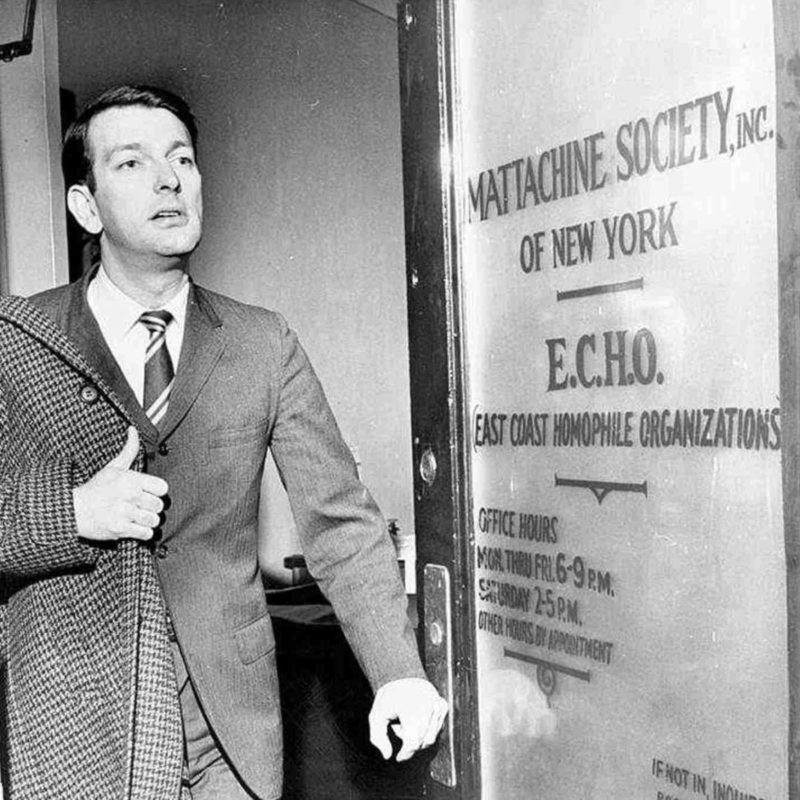
1950
The Mattachine Society
In Los Angeles, gay rights activist Harry Hay (1912-2002) founds America’s first sustained national gay rights organization: The Mattachine Society.
The society aimed to "eliminate discrimination", assimilate homosexuals into mainstream society, and cultivate an "ethical homosexual culture."
Dec. 15, 1950
A Senate report titled "Employment of Homosexuals and Other Sex Perverts in Government" is distributed to members of Congress.
The report states homosexuals have a mental illness, and "constitute security risks" to the nation.
April 1952
The American Psychiatric Association lists homosexuality as a sociopathic personality disturbance in its first publication of the Diagnostic and Statistical Manual of Mental Disorders.
The findings are criticized due to lack of empirical and scientific data.
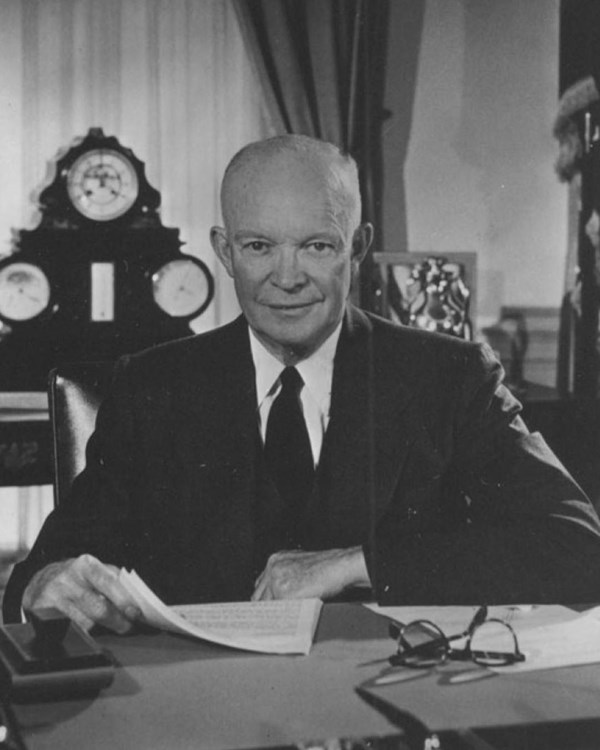
Apr. 27, 1953
Executive Order 10450
President Eisenhower signs Executive Order 10450, banning homosexuals from working for the federal government or any of its private contractors.
The Order lists homosexuals as security risks, along with alcoholics and neurotics.

1955
The Daughters of Bilitis
In San Francisco, Phyllis Lyon and Del Martin co-found The Daughters of Bilitis, the first organization for lesbians in the United States.
The organization hosts social functions, providing alternatives to lesbian bars and clubs, which were frequently raided by police.
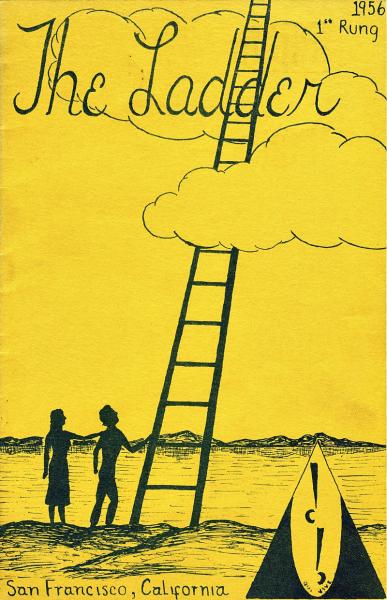
1956
The Ladder
The Ladder was the first nationally distributed lesbian publication in the United States from 1956 to 1972. It was the primary publication and method of communication for the Daughters of Bilitis, supported by ONE, Inc. and the Mattachine Society.
The name of the magazine was derived from the artwork on its first cover, simple line drawings showing figures moving towards a ladder that disappeared into the clouds.
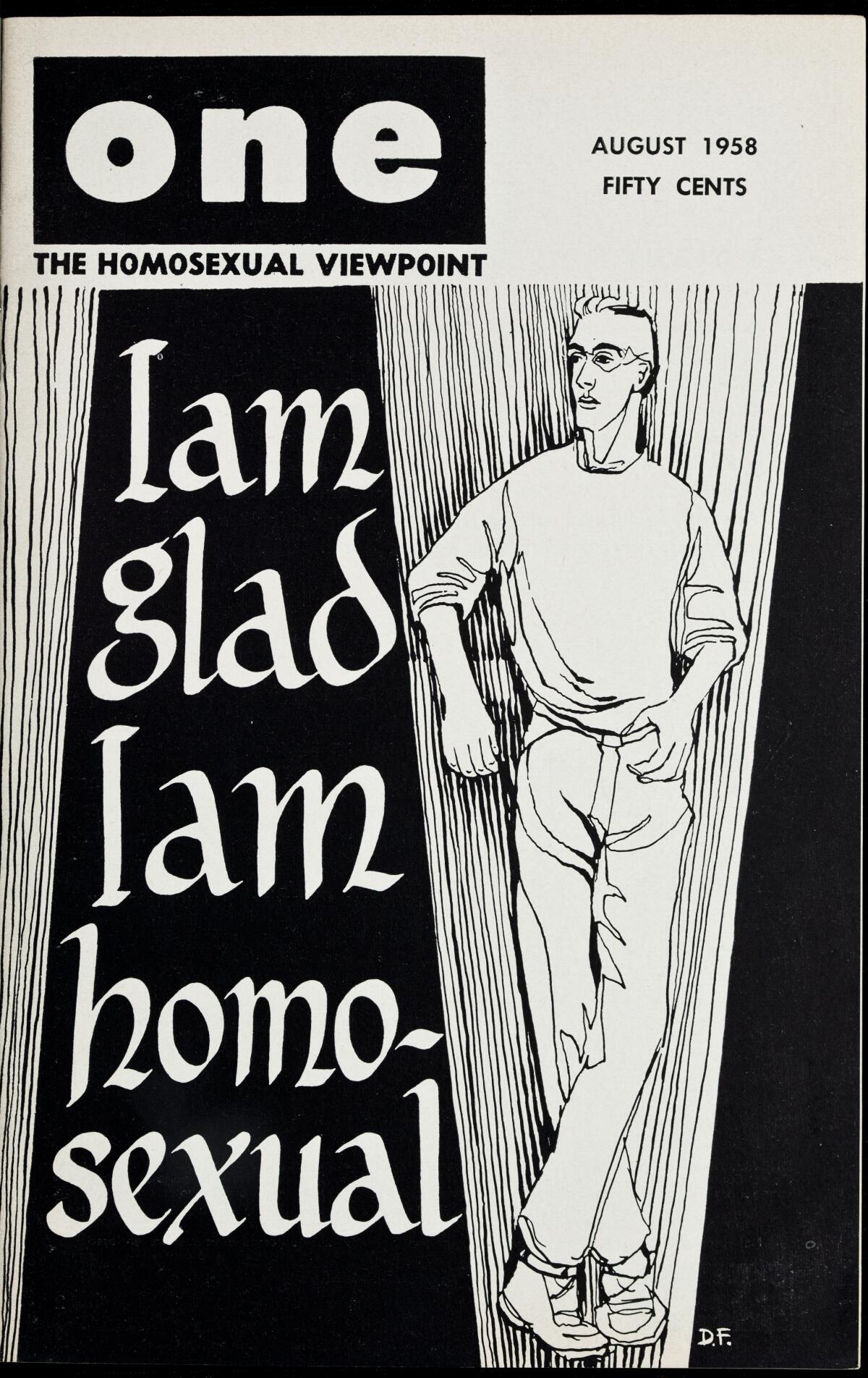
1958
One, Inc. v Olesen
Jan. 1, 1962
Illinois Decriminalizes Homosexuality

July 4, 1962
Reminder Day

Apr. 21, 1966
Julius Bar "Sip In"
Members of The Mattachine Society stage a "sip-in" at the Julius Bar in Greenwich Village, where the New York Liquor Authority prohibits serving gay patrons in bars on the basis that homosexuals are "disorderly."
Following the sip-in, The Mattachine Society sues the New York Liquor Authority. Although no laws are overturned, the New York City Commission on Human Rights declares that homosexuals have the right to be served.
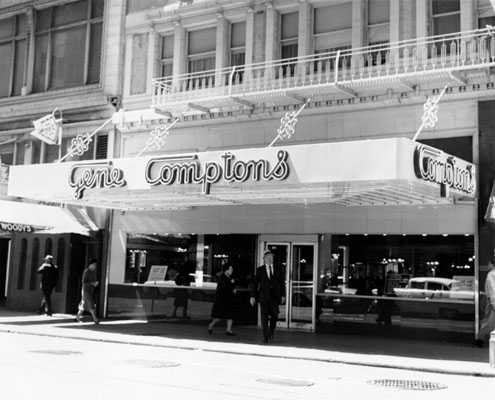
Aug. 1966
Compton's Cafeteria Riot
After transgender customers become raucous in a 24-hour San Francisco cafeteria, management calls police. When an officer manhandles one of the patrons, she throws coffee in his face and a riot ensues.
Following the riot, activists established the National Transsexual Counseling Unit, the first peer-run support and advocacy organization in the world.

June 28, 1969
The Stonewall Riots
Patrons of the Stonewall Inn in NYC's Greenwich Village riot when police officers attempt to raid the popular gay bar around 1am. While police raids on gay bars were routine in the 1960s, officers quickly lost control of the situation. Tensions between New York City Police and gay residents of Greenwich Village erupted into more protests the next evening and again several nights later.
The three-day riot included thousands of protestors but received only minimal news coverage.
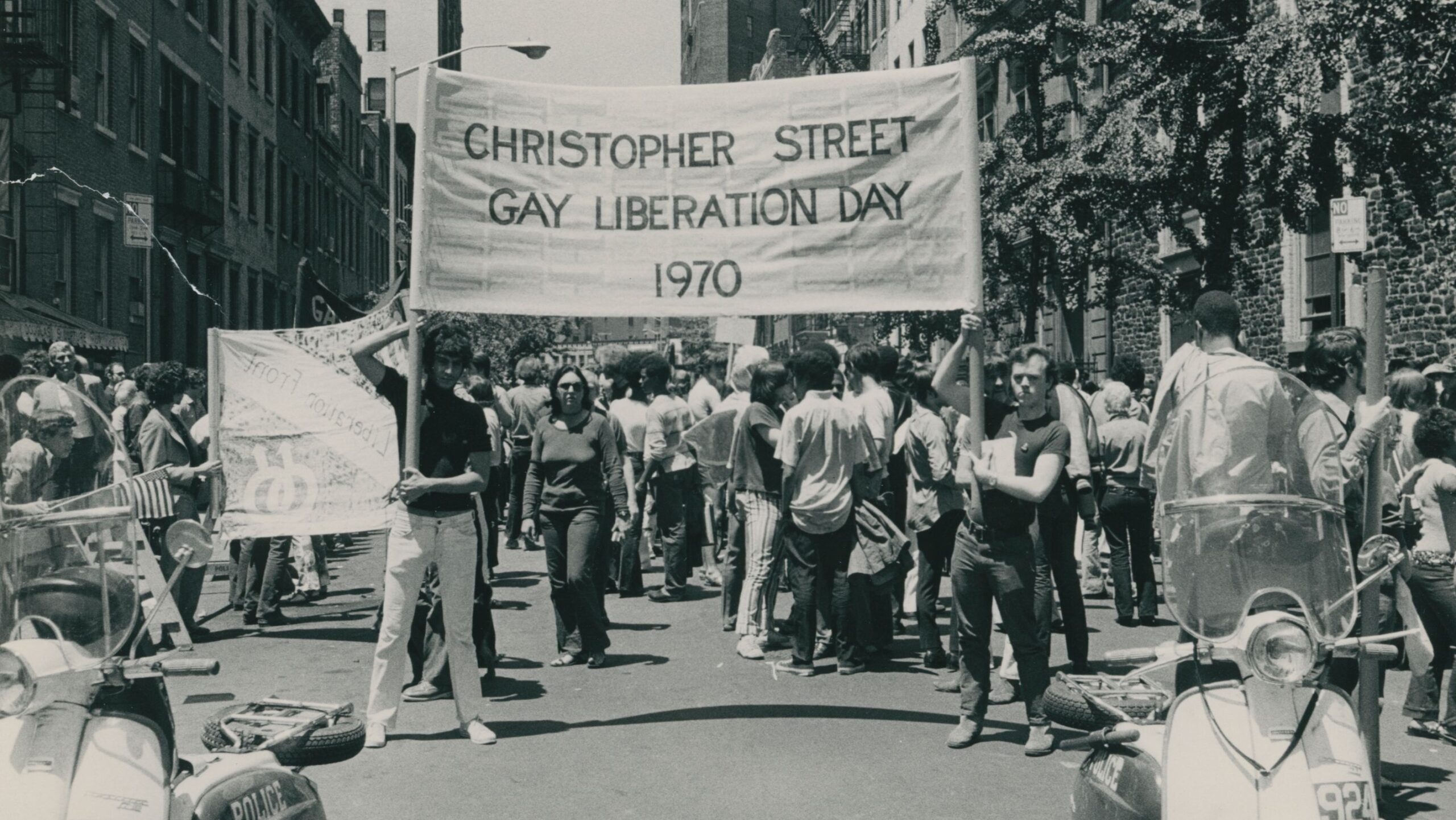
June 28, 1970
Christopher Street Liberation Day
Dec. 15, 1973
Homosexuality No Longer A Mental Illness

June 7, 1977
Crusade Against Gay Rights

Nov. 7, 1978
Milk Assassination
May 21, 1979
Former San Francisco city supervisor Dan White is convicted of voluntary manslaughter and is sentenced to seven years in prison for the assassination of Harvey Milk and George Moscone. More than 5,000 outraged protesters ransack San Francisco's City Hall.
The following night, approximately 10,000 people gather on San Francisco's Castro and Market streets for a peaceful demonstration to commemorate Milk's 49th birthday.

Oct. 14, 1979
National March on Washington
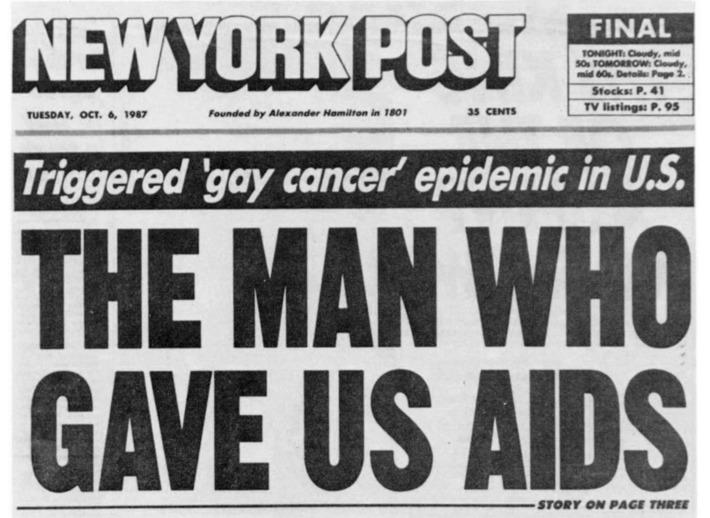
June 5, 1981
First Reports of AIDS
AIDS, Acquired Immunodeficiency Syndrome, was identified by the U.S. Centers for Disease Control and Prevention (CDC). Its cause—HIV, Human Immunodeficiency Virus—was identified in the earlier part of the decade.
AIDS was first clinically reported on June 5, 1981, with five cases in the United States. The initial cases were a cluster of injecting drug users and gay men with no known cause of impaired immunity.
July 3, 1981
GRID
The New York Times prints the first story of a rare pneumonia and skin cancer found in 41 gay men in New York and California. The CDC initially refers to the disease as GRID, Gay Related Immune Deficiency Disorder.
When the symptoms are found outside the gay community, Bruce Voeller, biologist and founder of the National Gay Task Force, successfully lobbies to change the name of the disease to AIDS.
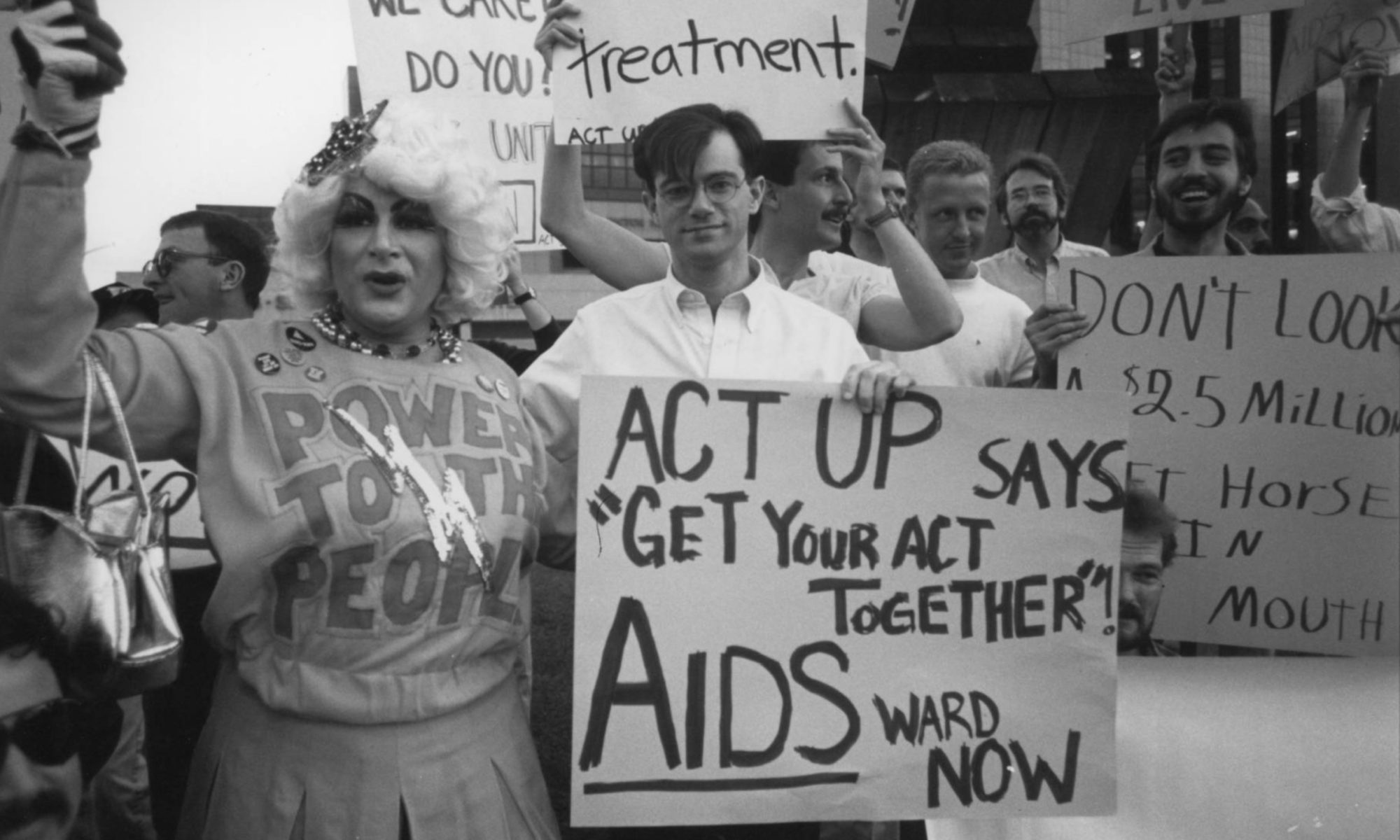
Mar. 10, 1987
ACT UP
AIDS advocacy group ACT UP (The AIDS Coalition to Unleash Power) is formed in response to the devastating affects the disease has had on the gay and lesbian community in New York.
The group holds demonstrations against pharmaceutical companies profiteering from AIDS-related drugs as well as the lack of AIDS policies protecting patients from outrageous prescription prices.
Oct. 11, 1987
March on Washington
Hundreds of thousands of activists take part in the National March on Washington to demand that President Reagan address the AIDS crisis.
It is not until the end of his presidency that Reagan speaks publicly about the epidemic.
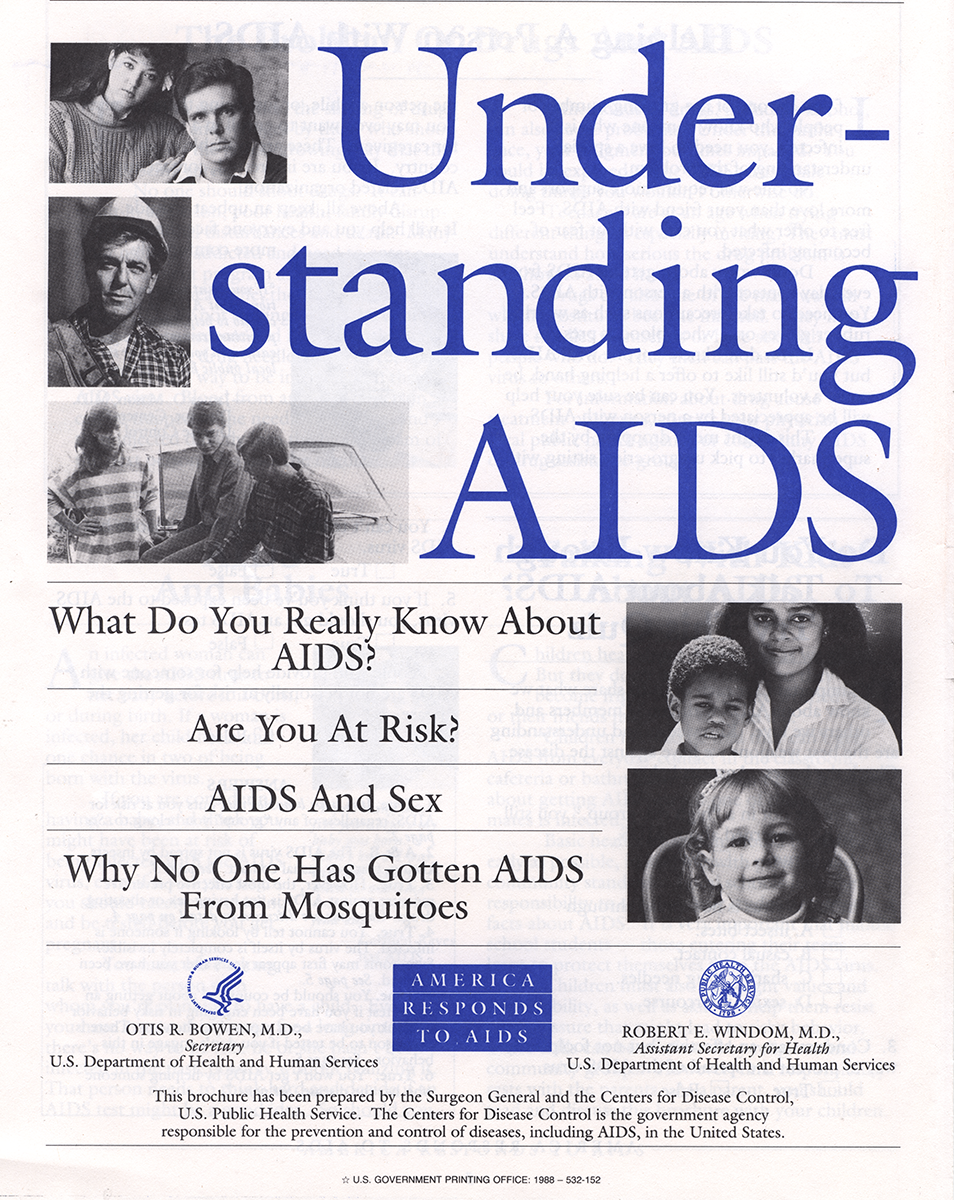
May/June 1988
Understanding AIDS

Aug. 8, 1990
Ryan White Care Act
President George Bush signs the Ryan White Care Act, a federally funded program for people living with AIDS.
Ryan White (1971-1990), an Indiana teenager, contracted AIDS in 1984 through a tainted hemophilia treatment. After being barred from attending school because of his HIV-positive status, White becomes a well-known activist for AIDS research and anti-discrimination.
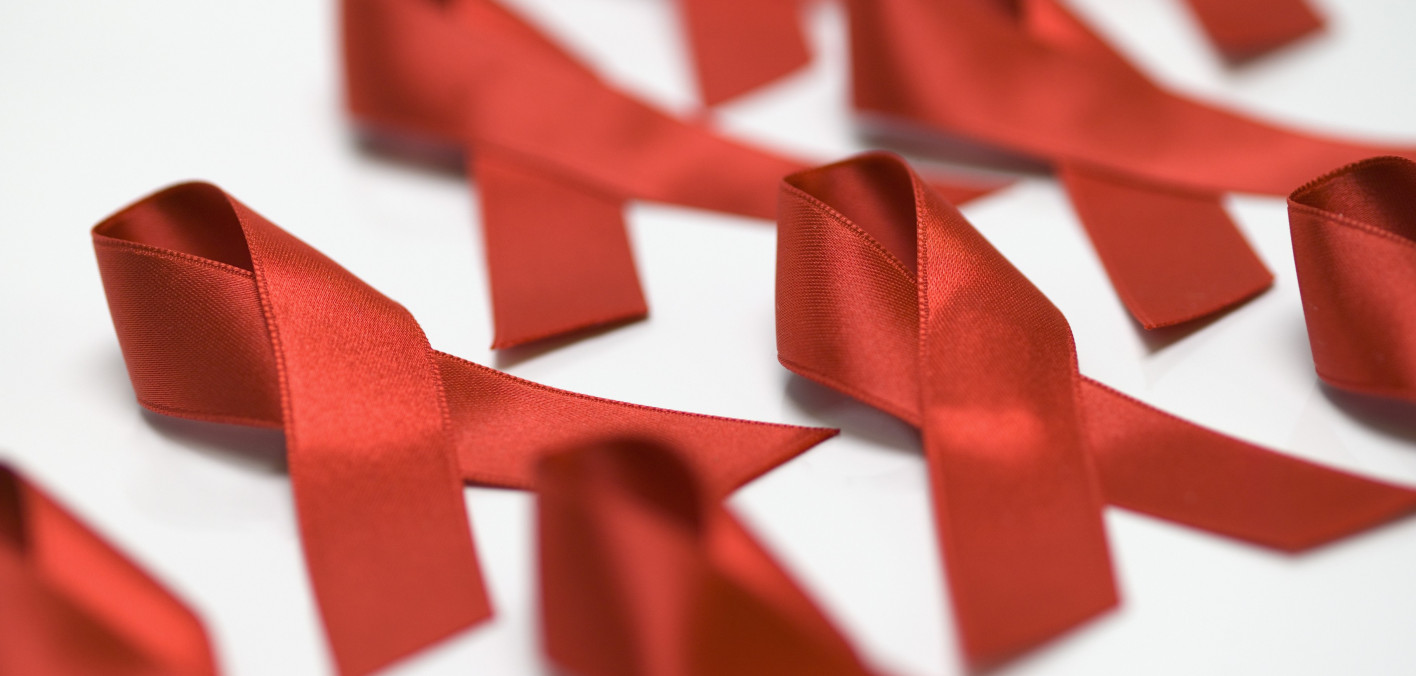
1991
Red Ribbon
Dec. 21, 1993
Don't Ask, Don't Tell
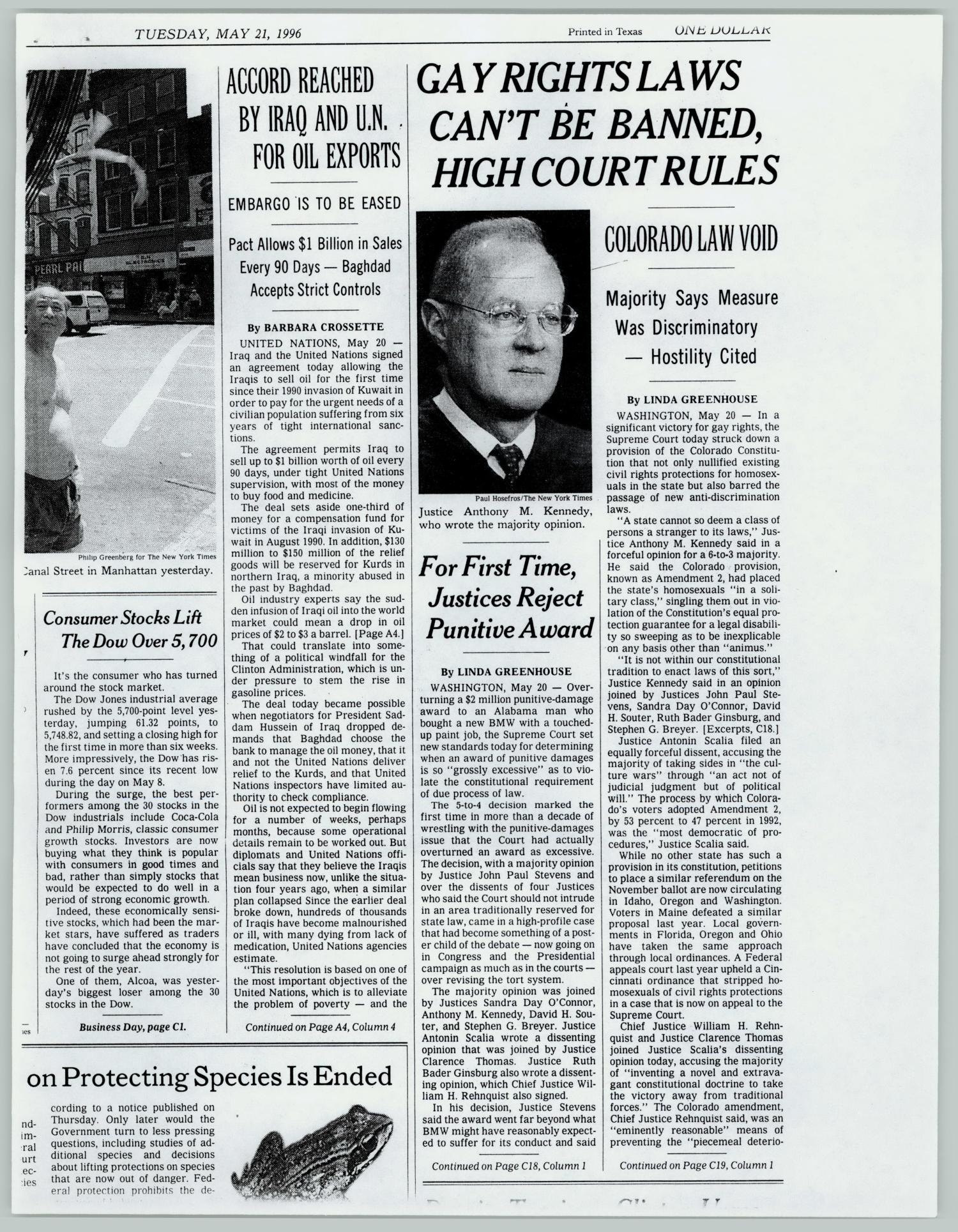
May 20, 1996
Romer v. Evans
Sept. 21, 1996
DOMA

Oct. 6, 1998
Matthew Shepard
On the night of October 6, 1998, Matthew Shepard (1976-1998) was offered a ride home by two men at the Fireside Lounge in Laramie, WI. The men drove to a remote rural area and proceeded to rob, pistol-whip, and torture Shepard, tying him to a barbed-wire fence and leaving him to die. Still tied to the fence, Shepard remained in a coma for eighteen hours when he was discovered by a cyclist who mistook him for a scarecrow.
Shepard was pronounced dead six days after the attack.

Apr. 26, 2000
Legal Unions In VT
June 26, 2003
Lawrence v. Texas
In Lawrence v. Texas the U.S. Supreme Court rules that sodomy laws in the U.S. are unconstitutional.

May 18, 2004
Gay Marriage in MA
Massachusetts becomes the first state to legalize gay marriage. The court finds the prohibition of gay marriage unconstitutional because it denies dignity and equality of all individuals.

Nov. 5, 2008
Prop 8
Proposition 8, known informally as Prop 8, was a California ballot proposition and a state constitutional amendment intended to ban same-sex marriage; it passed in the November 2008 California state elections, and came into immediate effect the day after the elections. Demonstrations and protests occurred across the state and nation.
June 17, 2009
Same-Sex Partner Benefits
President Obama signs a Presidential Memorandum allowing same-sex partners of federal employees to receive certain benefits. The memorandum does not cover full health coverage.
Oct. 28, 2009
Matthew Shepard Act
The Matthew Shepard Act is passed by Congress and signed into law by President Obama on October 28th. The measure expands the 1969 U.S. Federal Hate Crime Law to include crimes motivated by a victim's actual or perceived gender, sexual orientation, gender identity or disability.
Aug. 4, 2010
A federal judge in San Francisco decides that gays and lesbians have the constitutional right to marry and that Prop 8 is unconstitutional.
Dec. 18, 2010
DOMA Repealed
The U.S. Senate votes 65-31 to repeal "Don't Ask, Don't Tell" policy, allowing gays and lesbians to serve openly in the U.S. Military.
Feb. 23, 2011
President Obama states his administration will no longer defend the Defense of Marriage Act.

June 24, 2011
Marriage Equality in NY
New York State passes the Marriage Equity Act, becoming the largest state thus far to legalize gay marriage.
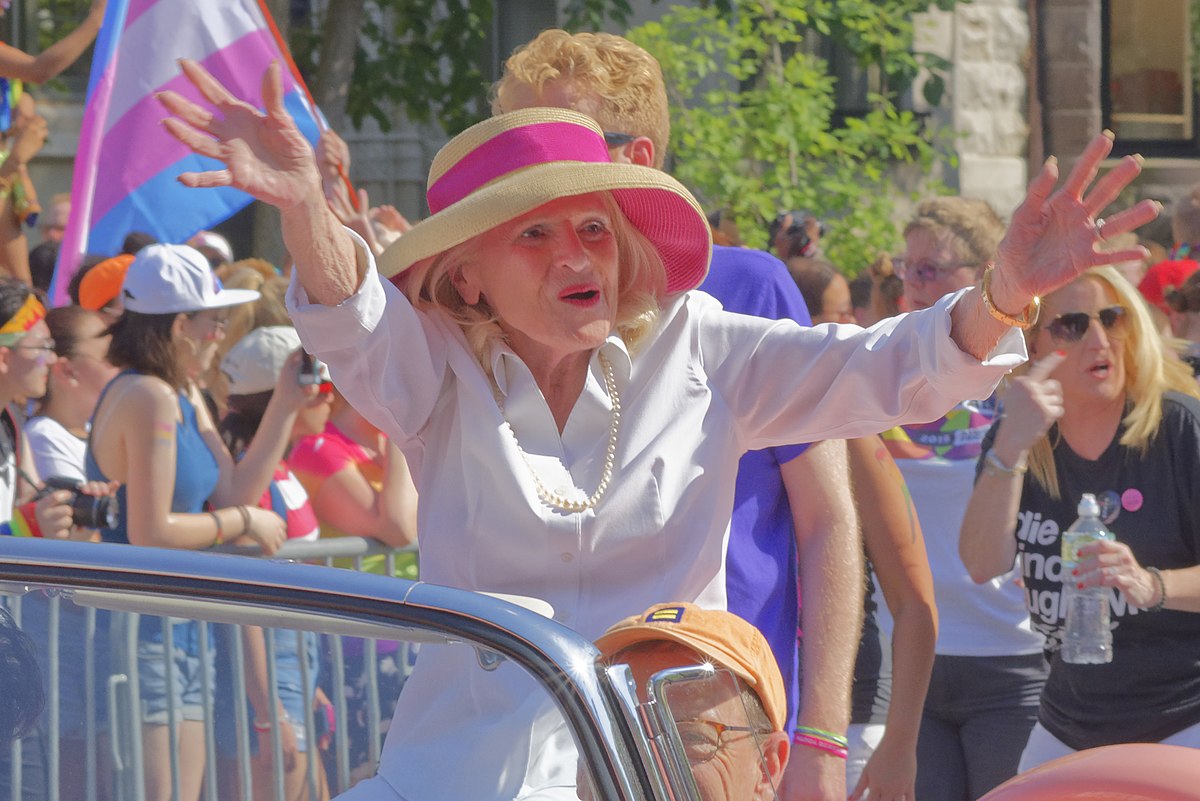
June 26, 2013
U.S. v Windsor
In a 5–4 decision, the Supreme Court found Section 3 of DOMA to be unconstitutional after widower, Edith Windsor (1920 - 2017), sought to claim the federal estate tax exemption for surviving spouses, but was barred from doing so.
Justice Anthony Kennedy declared Section 3 of DOMA to be unconstitutional "as a deprivation of the liberty of the person protected by the Fifth Amendment".
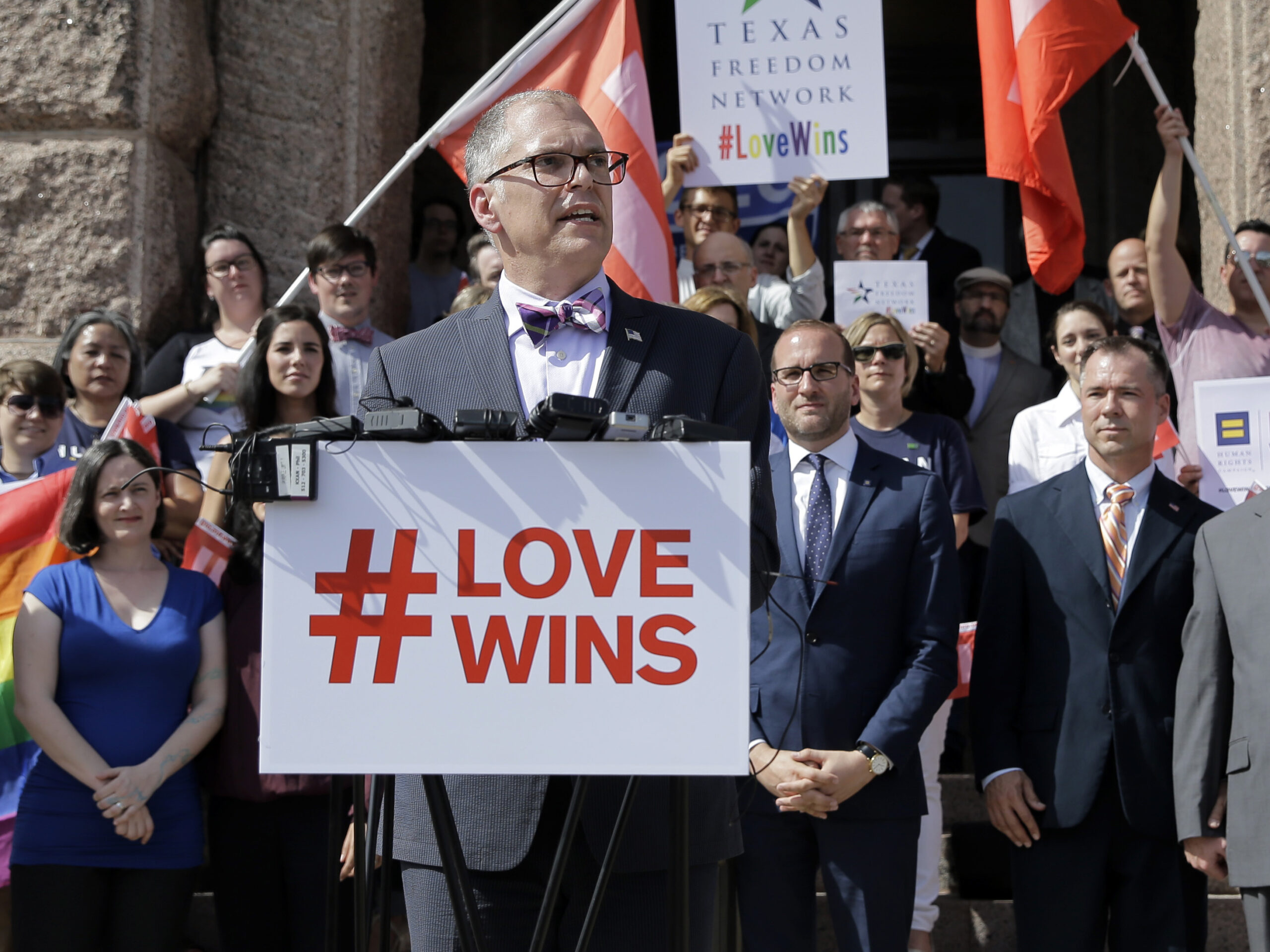
June 26, 2016
Obergefell v Hodges
In the landmark case of Obergefell v. Hodges, the Supreme Court ruled that the fundamental right to marry is guaranteed to same-sex couples by both the Due Process Clause and the Equal Protection Clause of the Fourteenth Amendment of the Constitution. The 5–4 ruling requires all fifty states, the District of Columbia, and the Insular Areas to perform and recognize the marriages of same-sex couples on the same terms and conditions as the marriages of opposite-sex couples, with all the accompanying rights and responsibilities.
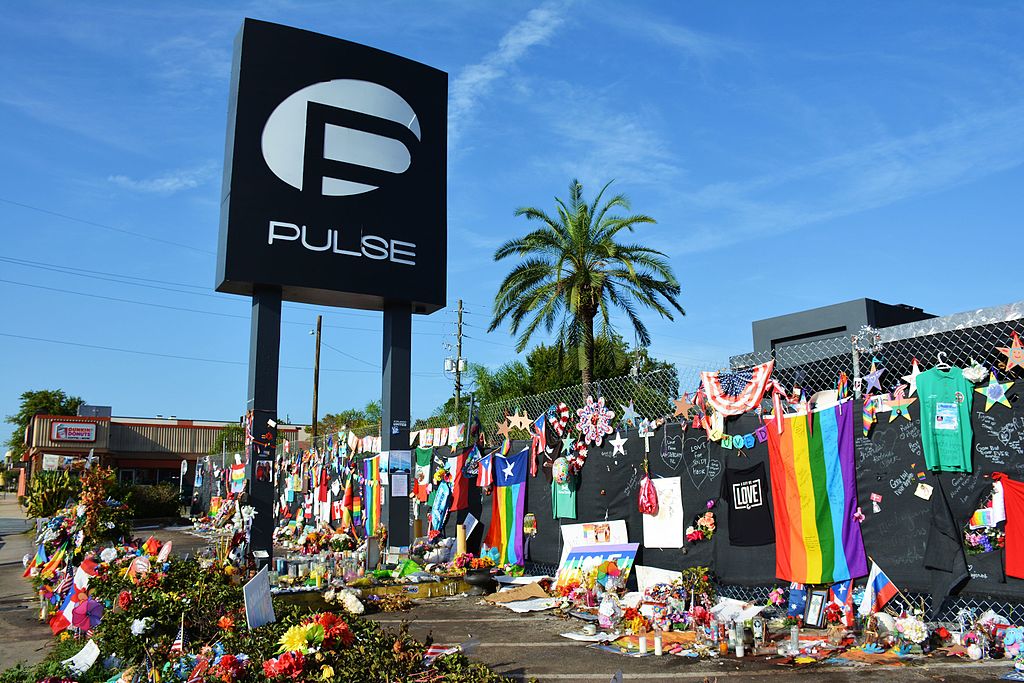
June 12, 2016
The Pulse Nightclub Massacre
In the early morning hours of June 12, 2016 forty-nine people lost their lives, and fifty-eight injured, during an anti-LGBTQ+ shooting at Pulse Nightclub in Orlando, FL. As one of the deadliest mass shootings in U.S. history, the Pulse Massacre ignited action from LGBTQ+ people all over the world against gun violence and in solidarity with those affected. The tragedy is the biggest recorded hate crime directed toward LGBTQ+ people in United States History.

2019
President Trump becomes the first Republican president to acknowledge LGBTQ Pride Month, which he did through tweeting.
The governors of New York, Michigan, Wisconsin, Colorado, and California fly the Pride flag from their state capitals/governor buildings for the first time during LGBTQ Pride Month.
Stories of Pride
The People Who Made History
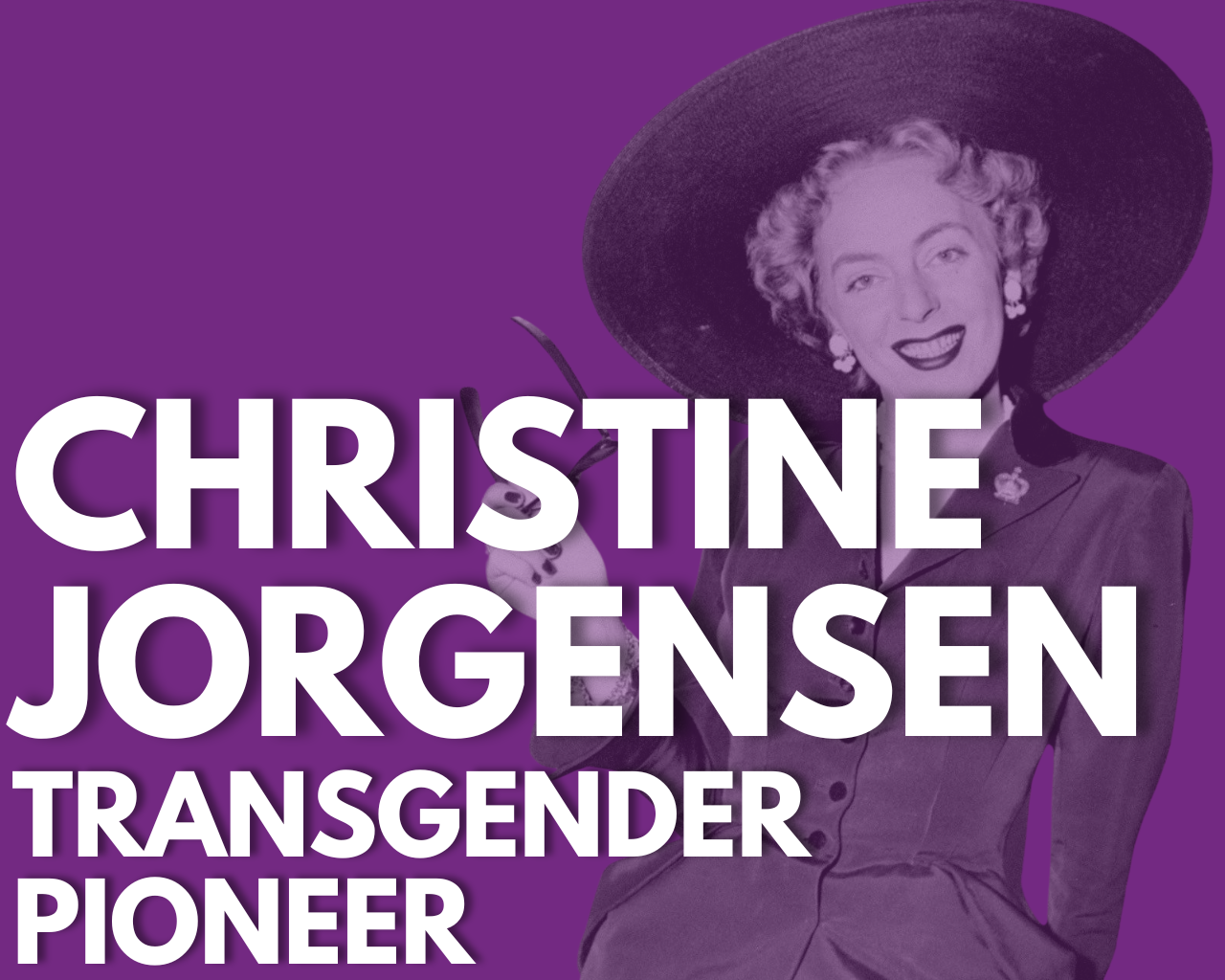
Christine Jorgensen (1926-1989) was an American actress, singer, recording artist, and transgender activist who garnered international headlines in the early 1950s as the first person in the U.S. to undergo a successful gender-reassignment operation.
After serving as a military clerical worker in WWII, Jorgensen attended several schools, worked, and pursued a photography career. During this time, Jorgensen learned about sex reassignment surgery and traveled to Denmark to obtain special permission to undergo a series of operations beginning in 1952.
Upon her return to the U.S. in the early 1950s, her transition was the subject of a New York Daily News front-page story. She became an instant celebrity, known for her directness and polished wit, and used the platform to advocate for transgender people.
For years, Jorgensen was the go-to media reference for anything concerning trans people or gender-affirming surgeries. Her 1967 autobiography Christine Jorgensen: A Personal Autobiography sold almost 450,000 copies. Throughout her career, she gave lectures at colleges and universities on the topics of transsexuality, though she would later disassociate with the term, and preferred transgender.
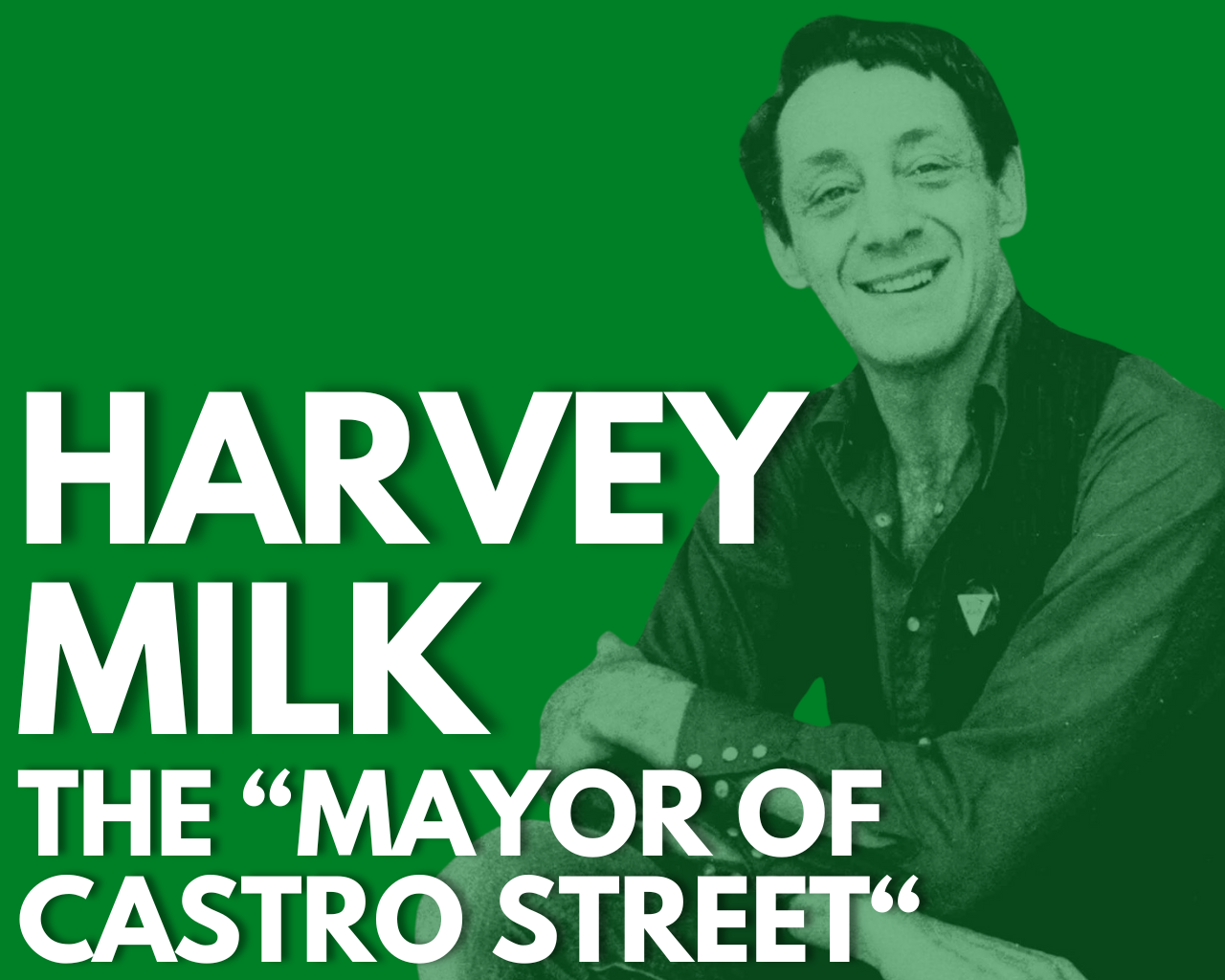
Harvey Bernard Milk (1930-1978) was the first openly gay man to be elected to public office in California, as a member of the San Francisco Board of Supervisors.
In 1972, Milk settled in The Castro, a San Francisco neighborhood that was witnessing an influx of gay men and lesbians. There, he opened a camera store and swiftly emerged as a respected leader within the gay community. His popularity grew when he challenged the city’s gay leadership, which he thought was too conservative in its attempts to gain greater political rights for homosexuals.
In 1977 he won a seat on the San Francisco Board of Supervisors where he advocated for a gay rights ordinance that aimed to prevent job dismissals based on sexual orientation and led a successful campaign against an initiative forbidding homosexual teachers.
On November 27, 1978, Milk was assassinated by Dan White, a former city supervisor.
Milk’s assassination has become associated with his political impact, largely due to his popularity at the time of his death. No current American gay leader has been able to attain the same level of influence in life that Milk achieved in death.
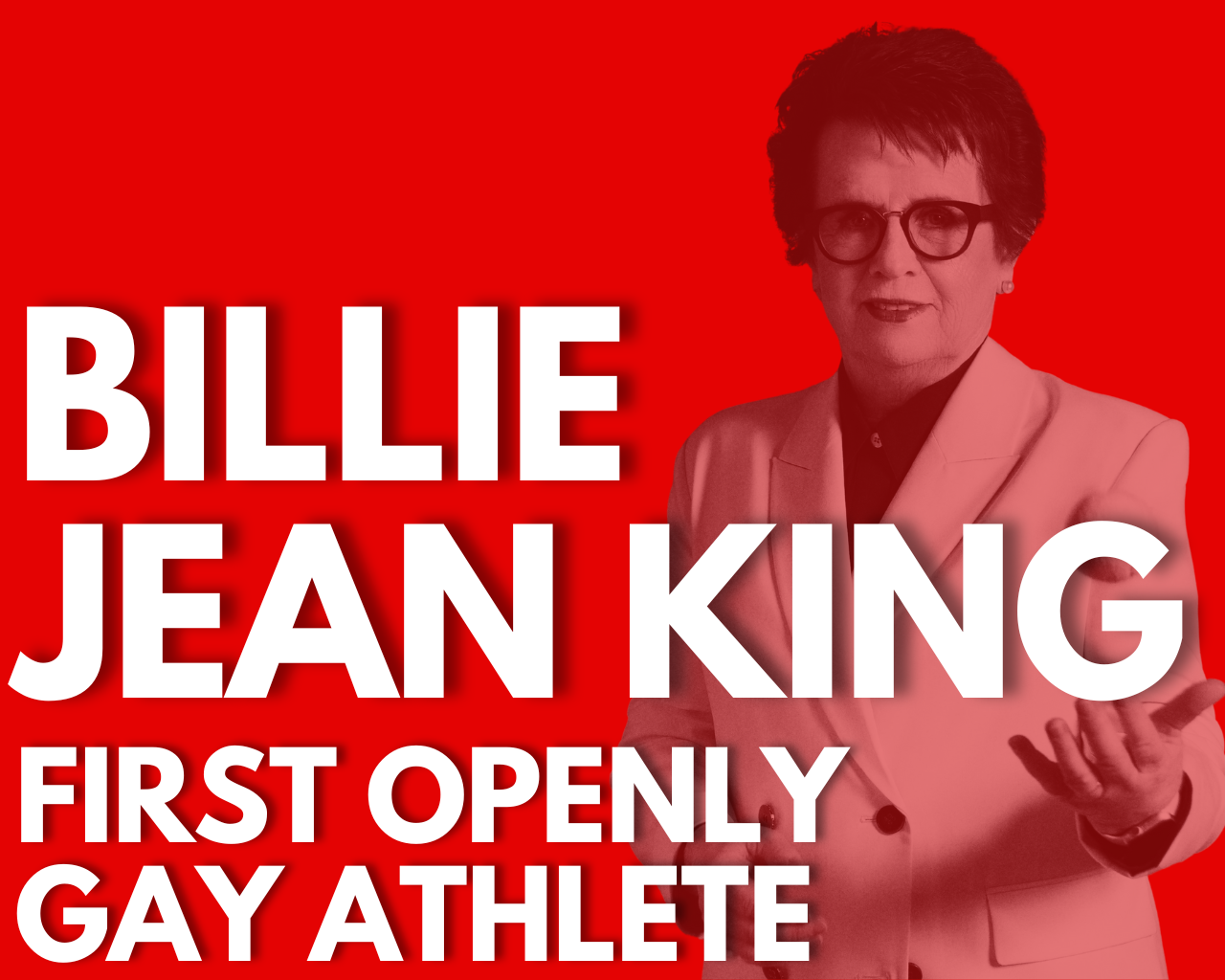
Regarded by many as one of the greatest tennis players of all time, Billie Jean King earned 39 Grand Slam titles from 1966 to 1975, and has a tennis stadium named in her honor. She also beat Bobby Riggs in the famous "Battle of the Sexes" match in 1973.
In 1971, King began an affair with her secretary, Marilyn Barnett. Barnett, who was fired in 1979, threatened to leak communications and documents about the affair and sued King and her (then) husband.
During the trial, King defied her publicist’s advice and came out as a lesbian, making history as the first openly gay athlete.
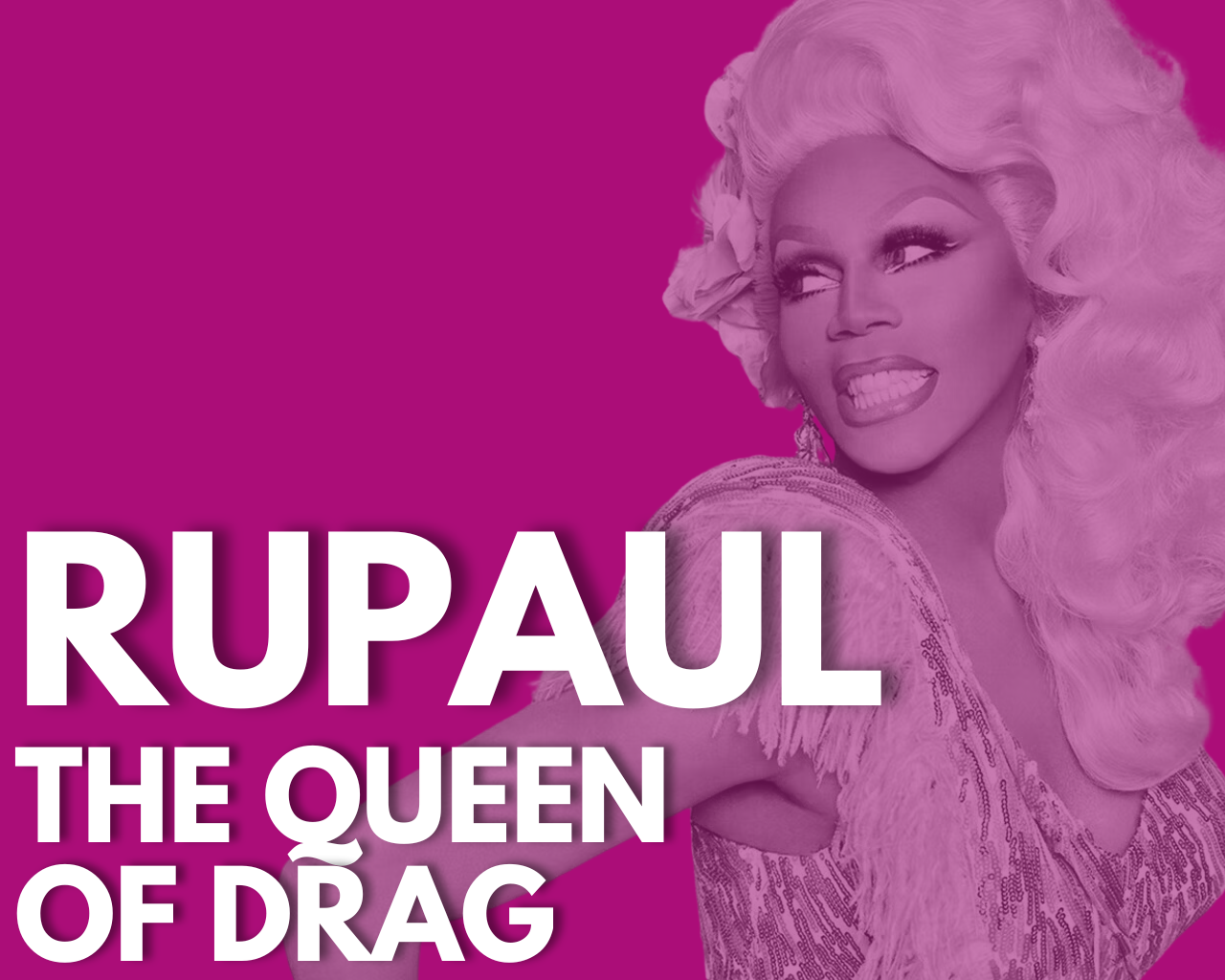
Rupaul is a television personality, actor, singer, producer, writer... and the most commercially successful drag queen in America (and the world, according to some).
A popular fixture on the NYC LGBT nightclub scene, RuPaul achieved international fame as a drag queen with the release of his debut single, "Supermodel (You Better Work)".
In 1994, he became the first drag queen to land a major cosmetics campaign as a spokesperson for MAC Cosmetics. He later received his own talk show on VH1 titled The RuPaul Show, while co-hosting the morning radio show on WKTU.
In 2009, he launched “RuPaul’s Drag Race,” a highly successful drag queen competition show that has received numerous awards, including twenty-four Emmy Awards, and multiple spinoffs.
RuPaul has pioneered queer representation on television, and revolutionized the portrayal of the LGBTQ+ community on screen.
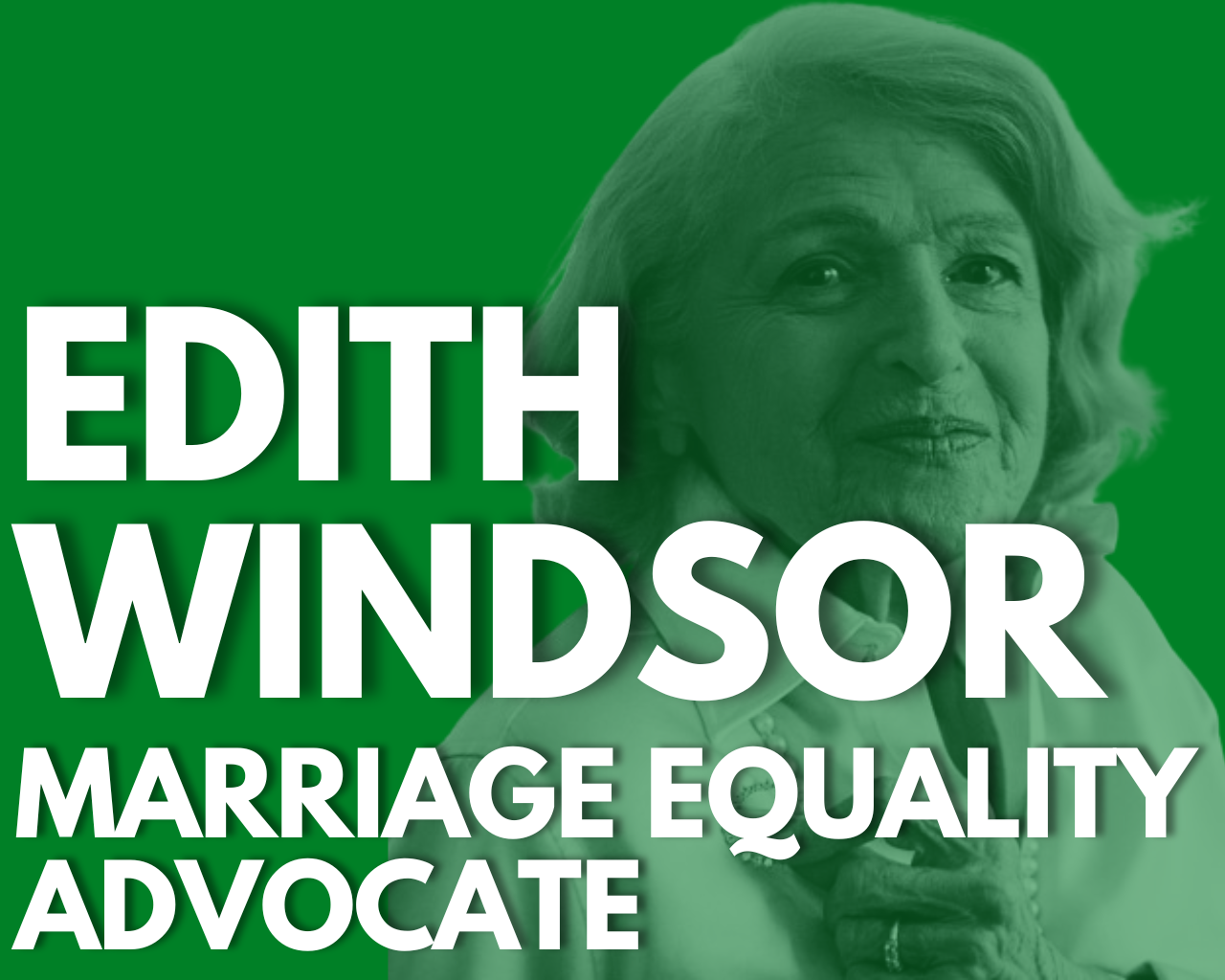
Edith Windsor (1929-2017) was an American LGBT rights activist and lead plaintiff in the 2013 Supreme Court case that overturned Section 3 of the Defense of Marriage Act and was considered a landmark legal victory for the same-sex marriage movement in the U.S.
In 2007, Windsor married Thea Spyer in Toronto, Canada after Spyer suffered a heart attack and was given less than a year to live. After Speyer's died in 2009, Windsor was left with a $350,000 estate tax bill due to the government’s refusal to acknowledge the couple’s marriage. Had federal law recognized the validity of their marriage, Windsor would have paid no federal estate taxes
She waged a war against the Defense of Marriage Act, taking the case to the Supreme Court. Windsor won in a 5-4 decision, which deemed Section 3 of DOMA as unconstitutional.
Following her win, Windsor continued to be a public advocate for same-sex marriage. In 2013, Time magazine named Windsor as a finalist for their Person of the Year award, losing out only to Pope Francis.
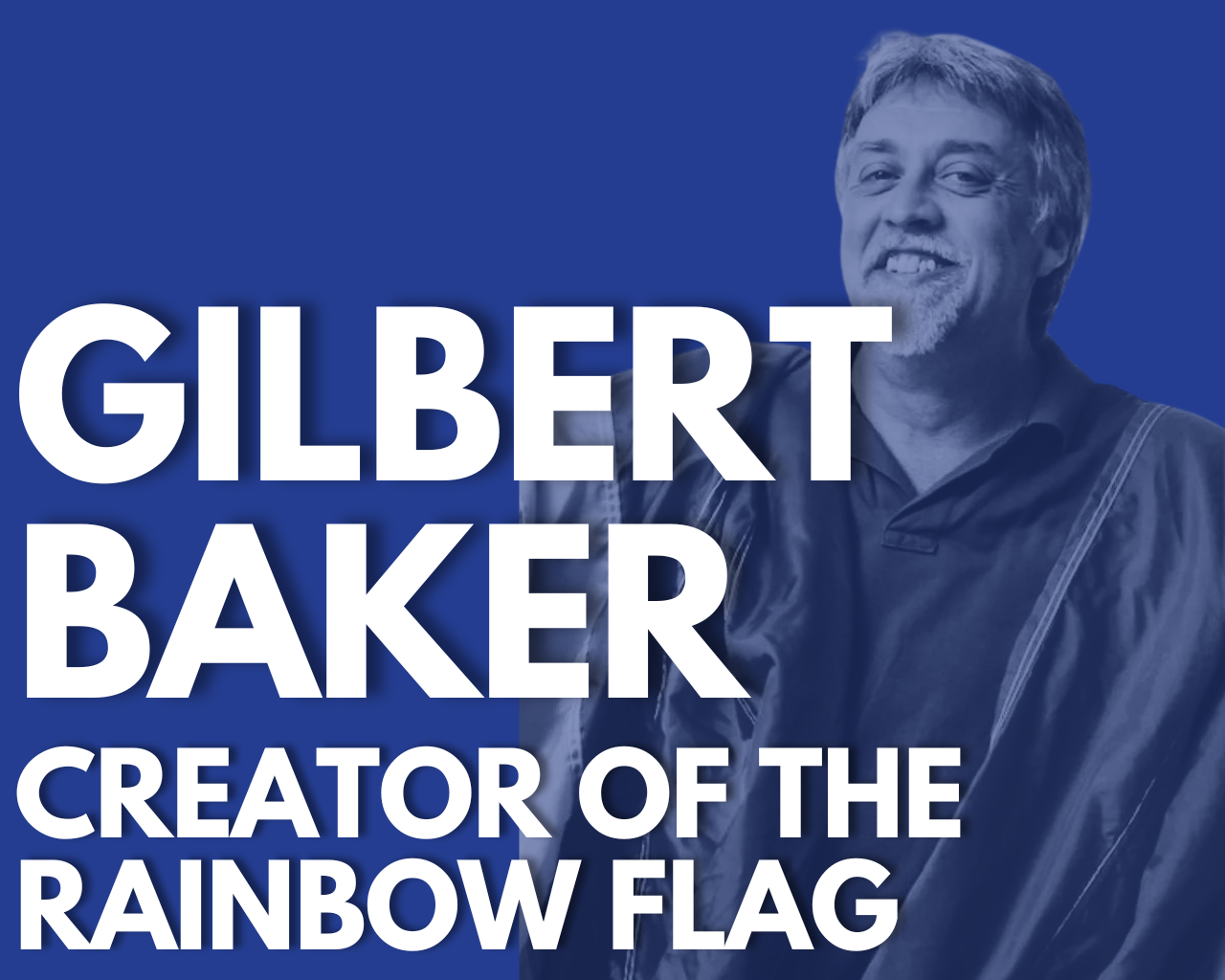
In 1978, Harvey Milk asked his friend Gilbert Baker (1951-2017) to make a symbol that would represent gay pride. Using the US flag as inspiration, Baker hand-sewed a rainbow flag, using different colors which represent important facets of the community.
After being honorably discharged from the military, Baker worked on California’s first marijuana legalization initiative and was taught to sew by a fellow activist. He used his skill to create banners for gay-rights and anti-war protest marches. Due to his creation of the flag, Baker often used the drag name “Busty Ross”, alluding to Betsy Ross.
In 1994, Baker created the world's largest flag (at the time) in celebration of the 25th anniversary of the Stonewall riots.
To commemorate the Rainbow Flag's 25th anniversary in 2003, Baker created a Rainbow Flag that stretched from the Gulf of Mexico to the Atlantic Ocean in Key West. After the commemoration, he sent sections of this flag to more than 100 cities around the world.
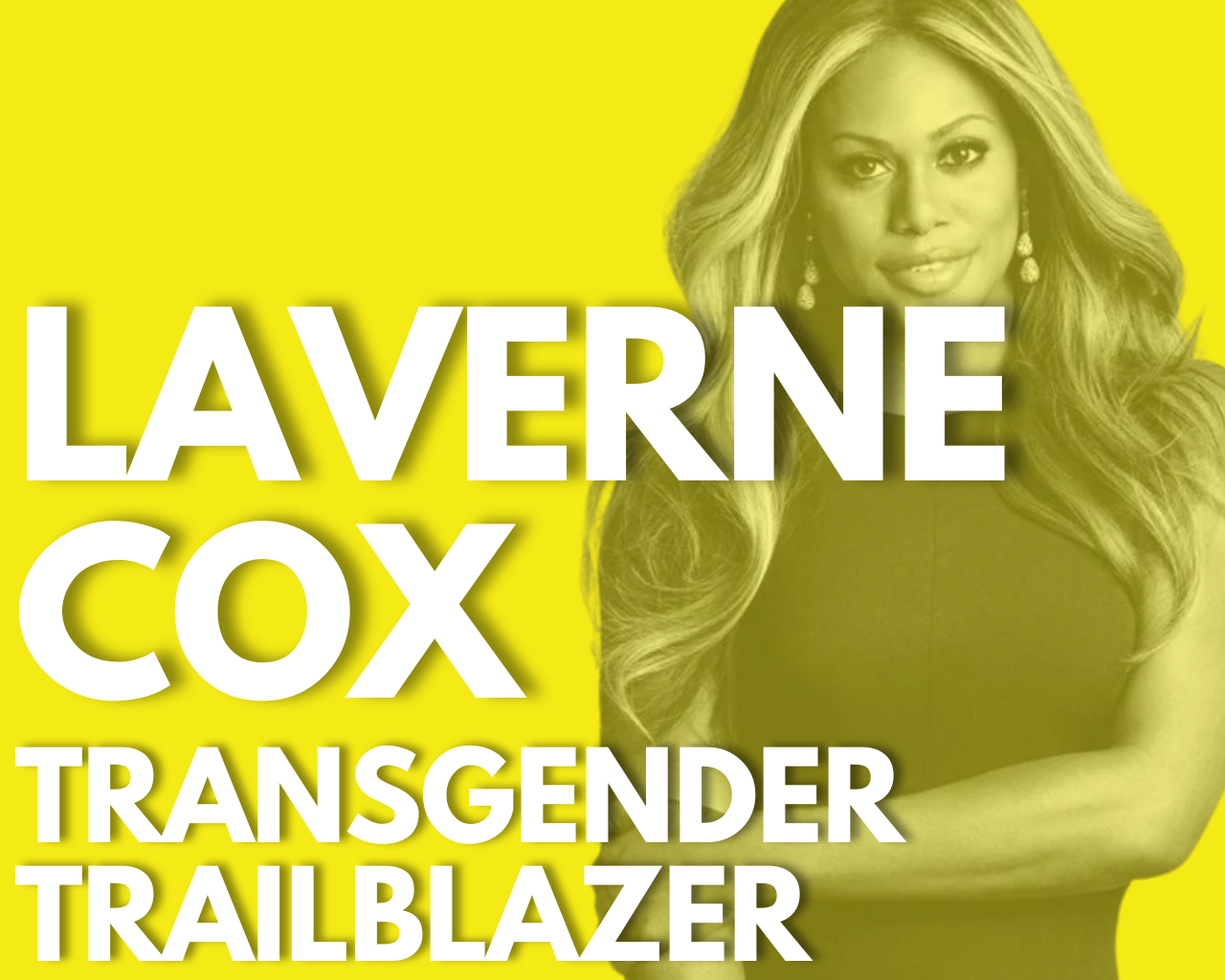
A prominent figure in the transgender community, Laverne Cox has received widespread recognition and numerous accolades for her exceptional activism and groundbreaking work.
Cox is the first transgender person to be on the cover of Time magazine, be nominated for a Primetime Emmy, and have a wax work in Madame Tussauds, as well as the first transgender woman to win a Daytime Emmy as an executive producer.
Her impact and prominence in the media has led to a growing conversation about transgender culture, specifically transgender women, and how being transgender intersects with one’s race.
The Groups That Sought Change
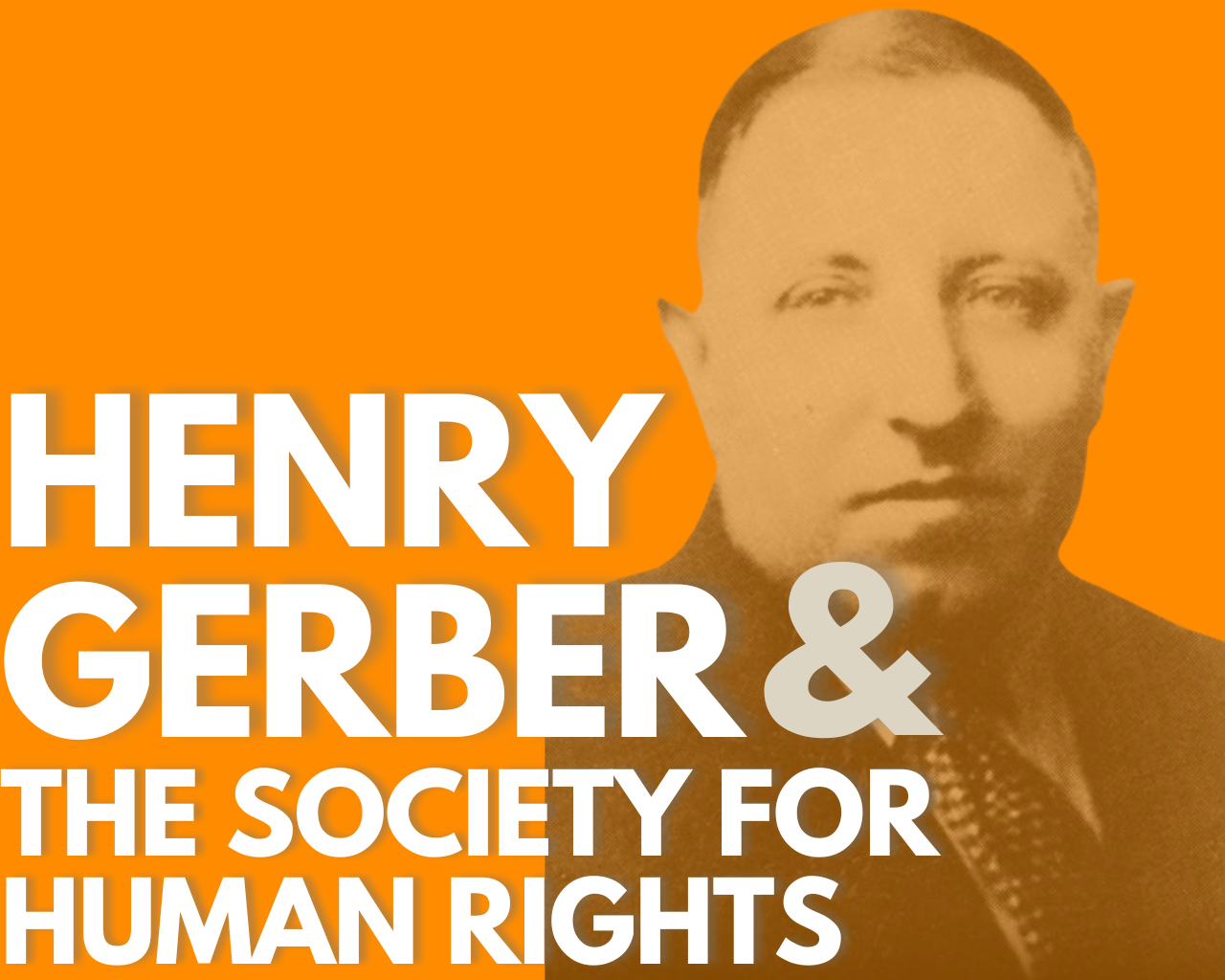
Founded by the Bavarian-born Henry Gerber (1892-1972) in Chicago, The Society For Human Rights is the first gay rights organization as well as the oldest documented in America.
Gerber’s experience serving with the US Army of Occupation in Germany for three years, and his exposure to the German homosexual emancipation movement, motivated him to form an organization dedicated to safeguarding the rights of gays and lesbians. Together with some friends, he founded The Society for Human Rights and produced a newsletter called Friendship and Freedom, which they distributed among their small membership.
In July 1925, the society abruptly disbanded when a co-founder’s wife reported her bisexual husband to her social worker, resulting in police intervention. Following a police raid, Gerber and several others were arrested and prosecuted for their deviancy. Following three costly trials, the charges against Gerber were dismissed. However, he lost his entire life savings defending himself and was fired from his job at the post office for conduct unbecoming a postal worker.
After the ordeal, Gerber started a personal correspondence club and wrote articles in gay publications under a pseudonym. The club became a national network for gay men to connect and communicate.
On December 31, 1972, Gerber died at the U.S. Soldiers’ and Airmen’s Home in Washington, D.C., at the age of 80. He lived to see the Stonewall Riots and the start of a new era of activist gay and lesbian liberation organizations.
Gerber founded and operated the Society for Human Rights out of his apartment at 1710 North Crilly Court in Chicago. Due to his involvement in the Society, Gerber was unjustifiably arrested and had his property confiscated, including the typewriter on which he wrote documents for the Society for Human Rights.
The Henry Gerber House is now recognized as a National Historic Landmark.
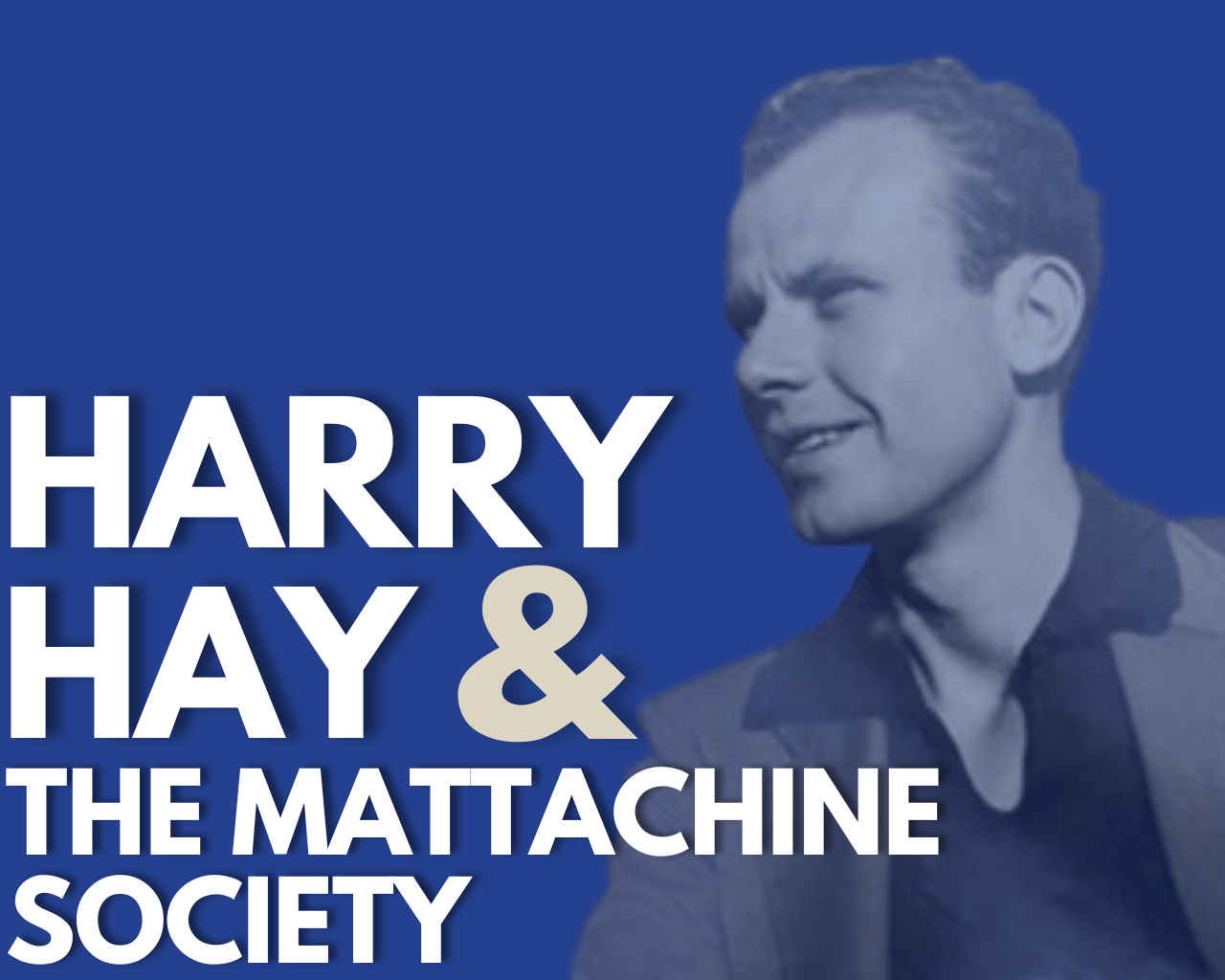
Activist Harry Hay (1912-2002) founded America’s first sustained national gay rights organization: The Mattachine Society in 1950. The society was one of several prominent groups during the period of LGBTQ+ activism, known as The Homophile Movement.
In 1948, Hay came up with the concept of a gay activist group. He discussed the idea of forming a gay support organization called “Bachelors for Wallace” with other gay men at a party after signing a petition for Henry A. Wallace. Hay was inspired by the positive feedback and wrote “The Call”, a document outlining the organizing principles that very night. However, the men who were interested at the party lacked enthusiasm the next day.
Over the next two years, Hay refined his idea, finally conceiving of an “international, fraternal order” to serve as “a service and welfare organization devoted to the protection and improvement of Society’s Androgynous Minority”. He planned to call this organization “Bachelors Anonymous” and envisioned it serving a similar function and purpose as Alcoholics Anonymous.
On November 11, 1950, Hay and four friends held their first meeting in Los Angeles, under the name Society of Fools. The society aimed to "eliminate discrimination", assimilate homosexuals into mainstream society, and cultivate an "ethical homosexual culture."
In April 1951, the group changed its name to Mattachine Society, a name chosen after Medieval French secret societies of masked men who, through their anonymity, were empowered to criticize ruling monarchs with impunity.
The Mattachine were instrumental in various LGBT+ History movements, most notably the “sip-in” at the Julius Bar in Greenwich Village (1966).
The Julius sip-in was a protest to fight state laws which prevented businesses from serving homosexuals, resulting in NY Supreme Court ruling that patrons could not be denied service simply for being homosexual.
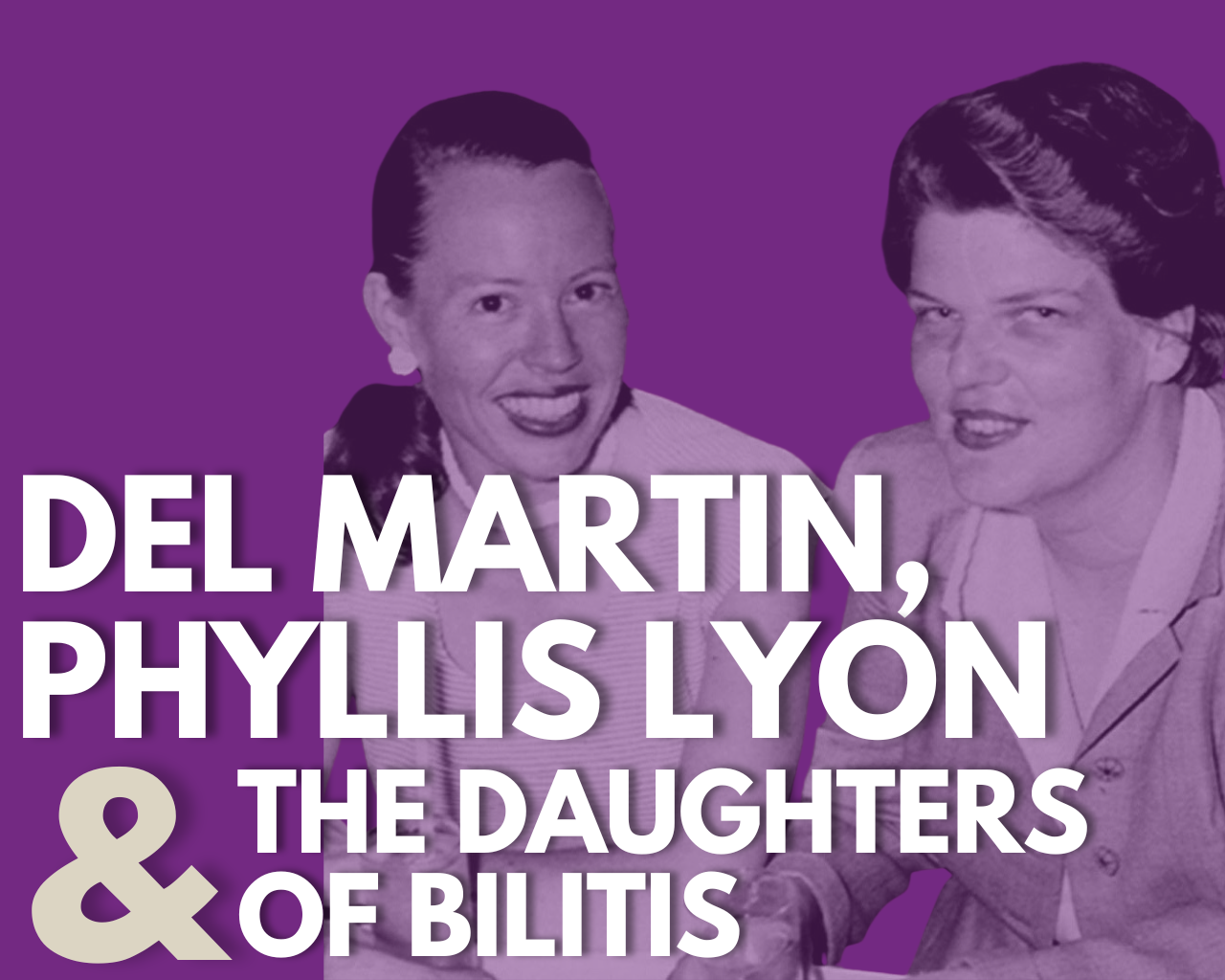
Having been in a relationship for three years, Del Martin (1921-2008) and Phyllis Lyon (1924-2020) co-founded The Daughters of Bilitis, the first social and political organization for lesbians in the U.S.
Martin and Lyon stated, “Women needed privacy...not only from the watchful eye of the police, but from gaping tourists in the bars and from inquisitive parents and families.”
Despite their uncertainty about the group’s direction, the women held regular meetings and elected Martin as president. From the start they also focused on educating other women about lesbians to reduce self-loathing resulting from the socially repressive times.
The group named the club at their second meeting. Bilitis is the name given to a fictional lesbian contemporary of the Greek poet Sappho by the French poet Pierre Louÿs in his 1894 work The Songs of Bilitis. The women chose the name for its obscurity; even Martin and Lyon did not know what it meant. “Daughters” was meant to evoke association with other American social associations such as the Daughters of the American Revolution.
Early DOB members felt they had to follow two contradictory approaches: trying to recruit interested potential members and being secretive. Martin and Lyon justified the name, writing later, “If anyone asked us, we could always say we belong to a poetry club.” They also designed a pin to wear to be able to identify with others, chose club colors and voted on the motto “Qui vive“, French for “on alert”. The organization filed a charter for non-profit status in 1957, writing a description so vague, Lyon recalled, “it could have been a charter for a cat-raising club.”
The couple also founded the ladder (1956-1972) the first nationally distributed lesbian publication in the U.S. The magazine was supported by ONE, Inc. and the Mattachine Society, with whom the DOB retained friendly relations.
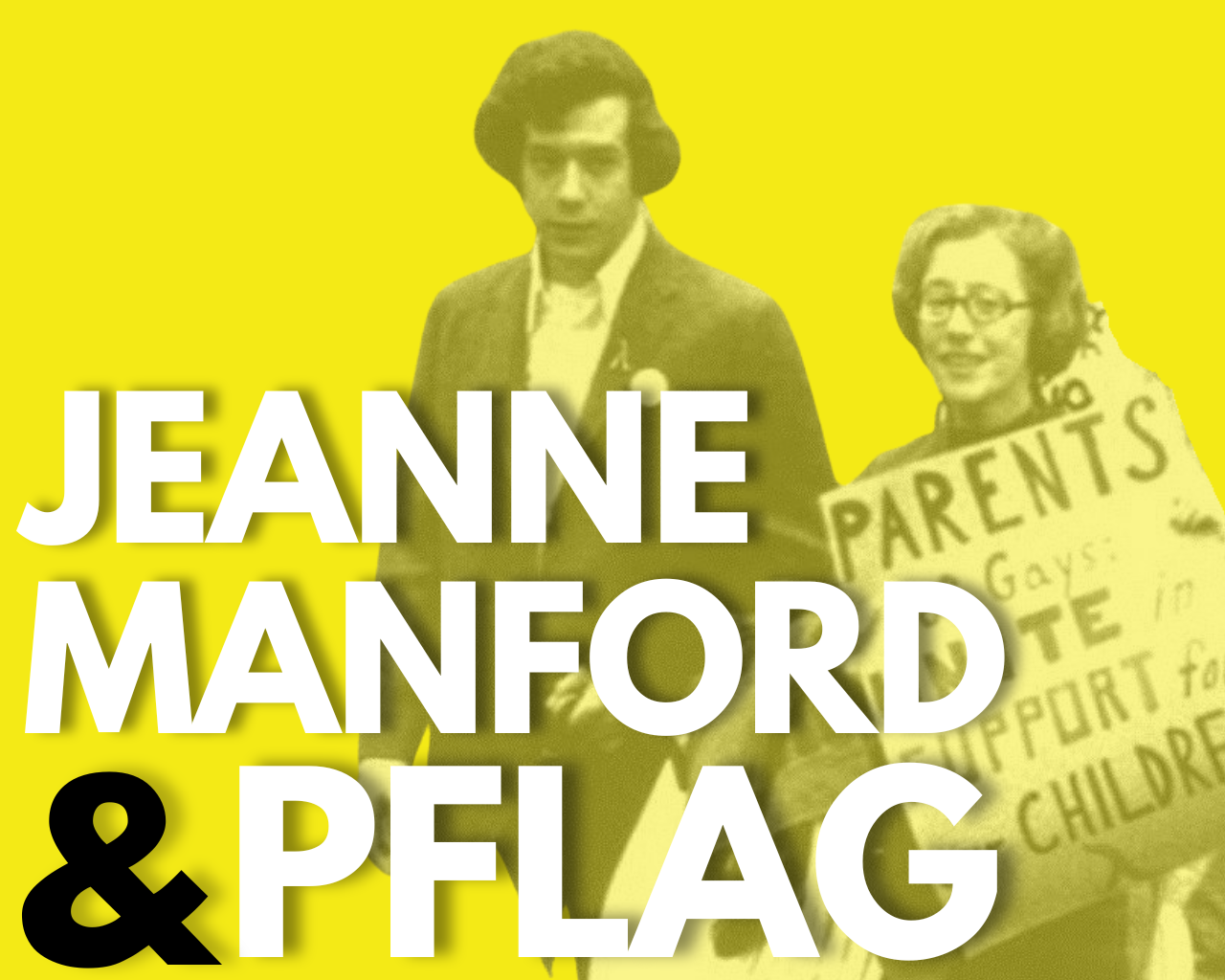
In April 1972, Jeanne Manford (1920-2019), an elementary school teacher, and her husband were at home in Flushing, Queens, when they learned their son Morty, a gay activist, had been beaten while distributing flyers at a political gathering in New York City.
In response, she wrote a letter of protest to the New York Post that identified herself as the mother of a gay protester and complained of police inaction. She gave interviews to radio and television shows in several cities in the weeks that followed, sometimes accompanied by her husband or son.
On June 25 1972, she participated with her son in the New York Pride March, carrying a hand-lettered sign that read "Parents of Gays Unite in Support for Our Children".
Prompted by her and her husband’s enthusiastic reception, they developed an idea for an organization of the parents of gays and lesbians that could be, she later said, "a bridge between the gay community and the heterosexual community". They were soon holding meetings for such parents.
The first meeting of the group—then called Parents of Gays—was attended by about 20 people, and was held at the Metropolitan-Duane Methodist Church, now the Church of the Village. In the following years similar groups sprang up around the country, offering "safe havens" and mutual support for parents with gay and lesbian children. Following the 1979 National March on Washington for Lesbian and Gay Rights, representatives from these groups met for the first time in Washington, DC.
In June 1991, Manford was grand marshal of New York City's Gay Pride March. In 1993, she was the grand marshal of the first pride parade in Queens and organized a local chapter of PFLAG in Astoria.
In February 2013, President Obama honored Manford posthumously with the 2012 Presidential Citizens Medal, the second highest civilian award given by the United States, for her work in co-founding PFLAG and ongoing years of LGBT advocacy.
Let's Keep Making LGBTQ+ History!
This project is constantly evolving. If you’d like to see something added, send me a message.John N. Daniello

John, a skilled graphic designer from New York, received notoriety after he curated and designed the inaugural LGBTQ+ exhibit, PRIDE!, for the Northport Historical Society in 2023. It was the first time in the museum’s sixty-two year history that an exhibit for the LGBTQ+ community was on display.
In June 2024, he curated and designed the follow-up exhibit, PRIDE! Our Story as an online exhibit/resource.
During his tenure at the historical society, which spanned over two years, he not only managed to double the membership but also successfully facilitated outreach efforts with the local community. Additionally, he created more than three hundred marketing materials, all of which gained widespread usage.
To learn more, visit the ABOUT page.
John, a skilled graphic designer from New York, received notoriety after he curated and designed the inaugural LGBTQ+ exhibit, PRIDE!, for the Northport Historical Society in 2023. It was the first time in the museum’s sixty-two year history that an exhibit for the LGBTQ+ community was on display.
In June 2024, he curated and designed the follow-up exhibit, PRIDE! Our Story, a version of which is currently on display at the museum.
During his tenure at the historical society, which spanned over two years, he not only designed numerous pop-up exhibits but also created various marketing materials that gained widespread usage.
To learn more, visit the ABOUT page.
